The Amazon Customer Journey: Leading The Way For Consumer-Centric Ecommerce
How Amazon provides customer-centric moments at every stage of consumer purchase journeys.

Amazon is one of the most recognizable brands and ecommerce retailers in the world. Reknowned for their customer-centricity, we take a closer look at what a typical consumer journey looks like for the retailer, from consideration to purchase.

Amazon: Setting The Benchmark For Customer-Centricity
As one of the great successes of the dot-com bubble, there are many stories about how Amazon came to be the brand they are today.
For instance, there’s the one about how founder Jeff Bezos was so eager to start his new venture that when he loaded the removals truck, having just resigned from a well-paying job at a New York hedge fund, he told the driver to “head West,” telling him he would fly ahead and forward over an exact address later.
Then there is the story about the fact that the company, as widely reported in the latter half of last year, is yet to turn over the kind of profit that would be expected for a business of their size, instead choosing to reinvest earnings into further growing sales and investments.

The “?” Elevation
Perhaps the story that really defines the company’s identity, and commitment to the highest levels of customer service, are the brand’s notorious elevations. Now a notorious anecdote of dot-com culture, the story has it that Bezos, who has long maintained a public email address, [email protected] , would forward customer complaint emails with a single ‘?’ in the email body, to an offending department.
These emails are treated with the highest priority (Bezos is known to take a keen interest in customer complaint issues) and the story is a great example of how the brand ensures a consumer voice inside the company.
Brand Profile: Amazon
- Global ecommerce and technology giant.
- Complete, and near unparalleled range of consumer goods.
- A key strength of the brand is their reputation for exceptional customer service. The brand prides itself on their class-leading logistics, which enables them to provide both cosmopolitan areas, or remote regions, with the same level of service.
- The brand have built up a strong reputation. In 2014, the brand topped YouGov’s Global Ranking of brand sentiment, with marketing expert Bryan Eisenberg calling them “the Earth’s most customer-centric company.” The same year, Interbrand named Amazon as the 15th most valuable brand in the world.
In recent years, the brand have expanded from their traditional stronghold in ecommerce, to web services and consumer technology:
- Beginning with the hugely successful Kindle e‑Reader, the brand have since released the Fire tablet, Fire TV stick, and most recently Amazon Echo – the voice activated computer which has been described as somewhere between “a useful gadget and a member of the family.”
- The trump card in the Amazon’s deck is Amazon Web Services. Launched in 2006 and now operating 1.4 million servers across the world, the firm was recently described by Amazon founder Jeff Bezos as “a $5 billion business and still growing fast.” Dan Kurnos, an analyst at the Benchmark Company, told the BBC , that AWS “was surprisingly more profitable than forecast.”
- Competitors: Alibaba, Rakuten, Asos.com, and countless more ecommerce providers in various territories, with various niches. Apple, eBay, Google, Microsoft, Samsung, Rackspace, IBM , VMware (technology and cloud computing services).

The Amazon Customer Journey
It’s widely understood that on Amazon, consumers can get just about anything. From obscure one-off purchases, to common everyday items. Over time the retailer have also built up an incredible reputation amongst consumers which has cemented what customers expect from both the brand themselves, and online retails in general.
Amazon have achieved the enviable feat of building a strong reputation amongst audiences across many territories and across diverse age groups. A 2014 report put together by Harris Poll ranked Amazon as the number one brand in the world by reputation.
In general, the brand comes across extremely well in terms of customer expectations. It’s fair to say that with Amazon customers can reasonably expect prices to be competitive, for delivery to be swift, and for a fair and hassle free returns procedure should there need to be.
By all accounts, the brand is accepted by consumers and digital marketing analysts alike to be a paradigm of customer-centricity and excellence.
But how well exactly? In the second of our articles analyzing the customer journey from consideration to checkout, following our evaluation of the Argos customer Journey earlier this year, we put the ecommerce giant to the test.
How well does Amazon provide for digital customers in search of an electric toothbrush?
Be Considered
As touched upon previously, Amazon have built up a tremendous reputation among consumers. Especially in Western markets, Amazon is viewed as a portal from which consumers can access the information about products that they are interested in purchasing.
As Google data indicates, “Amazon” is the most popular retail search term in the U.S.
While other retailers may rely on channels such and social media, or organic search to put themselves into consideration, Amazon shows that a brand that truly commits to building positive brand sentiment and reputation can end up leading the race, gaining a position in their space which puts them at the “top of mind” for consumers.
Consumers landing on the Amazon homepage will be met with a geo-specific version of the site, and thus, for many the Amazon search bar will be the starting point for the purchase journeys they will undertake.
Organic Search & Paid Search
While much of Amazon’s traffic will come directly from branded search terms, that’s not to say that the brand doesn’t have a strong presence in organic search.
A unique feature of Amazon search results in Google is that the pages that rank link directly to popular product pages, as opposed to competitors who link to dedicated category pages. The organic search results for example, links to the Philips Sonicare product which has more than 4,000 reviews. This is in line with Amazon’s belief in simplifying the number of steps a consumer has to navigate to checkout.
Too Big For Google Shopping?
While many find it necessary to invest in Google Shopping results, Amazon is in a unique position among retailers in that their own search functionality is as popular among consumers.
A search of several typical products reveals that Amazon results don’t feature in Google Shopping results. While their absence represents a hit to their search visibility on Google, however the brand is reputable enough that the brand’s absence would be notable enough to lead consumers to Amazon directly when comparing products.
Amazon seems to instead rely on paid and organic visibility in the search engine, and the brand have a small amount of investment on the Google shopping results in the form of paid advertising for the popular search modifier “best electric toothbrush”.
Be Evaluated
Amazon’s own domain is where their main asset, an exceptional user experience, comes to the fore.
Searching for “electric toothbrush” via the Amazon search engine reveals thousands of product results, ranked by relevance, which evidently is heavily influenced by popularity.
Products have clear title descriptions, clear prices, and additional buying options, which opens up the retailers network of third-party sellers in Amazon Marketplace.
Incredibly important to the Amazon user experience is the prominent use of user reviews. Amazon was an early adopter and pioneer of user-generated content and reviews, and every product listed on the site is linked to dedicated customer reviews, which have become a go-to source for consumers everywhere.
Amazon’s review system has become an incredible resource for user-generated reviews, which studies have shown elicit higher levels of trust especially among millennials .
Site Design & Experience
Amazon product pages have become a triumph of utility and efficient design.
To begin with, the initial above-the-fold product page is clean, clear, and contains plenty of negative space, which accommodates the basic need consumers have to view images of the product, as well as the price and color options.
On the right hand side, items can be added to basket via a single click, and for customers who have enabled 1‑Click ordering, they can complete a purchase almost instantaneously.
1‑Click represents one of the fastest and most streamlined means for consumer to purchase a product online, should they wish to.
Scrolling down the page, customers are presented with a rich source of further product content. Amazon secures an opportunity to upsell via the “Frequently Bought Together” section, which in this case offers replaceable heads for the electric toothbrush.
The product description is a rich source of information and contains manufacturer content about the product consumers may be seeking out, to compare or further evaluate a product.
A relatively recently added feature: “Customer Questions and Answers” enables users to fulfill an extremely useful touchpoint for consumers. Enabling consumers to participate in questions and answers allows Amazon to leverage their huge customer base to achieve the scale they need to provide informative answers for the millions of products in their ecosystem.
The Amazon mobile experience offers class-leading speed and functionality for consumers. The app offers synchronized baskets from previous desktop sessions, and vice versa, performing the admirable feat of connecting user journeys between devices.
Equally, and more on this in a moment, Amazon’s hugely effective tracking of search history allows them to offer an incredible level of personalization in displayed pages.
If a user views a product on a logged-in desktop, they can fully expect to see the same or similar product prominently in their mobile app. If they want to purchase a product they were researching previously, they could do this via the retailers app in just a few clicks.
Ecosystem & Personalization
While ease and availability of the checkout system may sound like a simple concept, it is the result of the brand’s huge repetitional assets which results in the user-generated content and collective endorsement of products that allow consumers to fulfill all the necessary touchpoints for purchase within the Amazon buying ecosystem.
This is the area in which Amazon really excels. The concept of a self-contained ecosystem which provides for all user needs, connecting up the different moments in the user journey, and anticipating what consumers are looking for.
The recommended products are a perfect example of this. Have a look at just how personalized the Amazon site experience can be, based on previous searches and queries:
From experience, after a product is purchase, the prominence of these displays is often toned down as the brand recognizes that the product no longer represents a need for that consumer.
Be Purchased
The fact that we have already touched on purchasing product several times in this article, in 1‑Click, buying options, and mobile app purchases, is a testament to just how well integrated Amazon’s checkout system is to their overall site experience.
The many features discussed in this article essentially enable consumers to research and evaluate products, and if and when they make the decision to purchase, Amazon’s check out system is only a few clicks away from any point in that journey.
For consumers who decide to purchase, a factor in their decision making may have Amazon’s excellent delivery provisions, which leverages the brand’s incredible logistics.
A highlight of this service is Amazon Prime. A subscription to Prime offers guaranteed next day delivery for any product dispatched from an Amazon Warehouse. Costing $99 per year, the service also includes access to Prime Video, the brand’s streaming service and answer to Netflix.
A little reported benefit, but one that falls in line with the brand’s customer-centric principles is that if a product is reduced in price within 30 days of a purchase, Amazon will refund the difference . Such practices are a great way to move consumers from a mindset of purchase, to a mindset of brand loyalty.
Create Awareness & Build Loyalty
Amazon is a valuable brand, and as such they can rely on established audiences and global reputation in continuing to win customers. However that isn’t to say that they’re not partial the occasional viral video or social media campaign.
Capturing the excitement and instant gratification of online delivery, it is somewhat reminiscent of recent similar advertisements from the likes of UK ecommerce retailer Argos. One of the retailer’s most successful campaigns in recent years has been their unveiling of the concept of Amazon Prime Air.
Some may be skeptical, but like Google’s driverless cars, delivery drones are a testament the tech companies vision and ambition in the field of customer-centric innovation. More than anything else, this represents the brand’s identity in the minds of consumers.
Seasonal Events: Black Friday/Cyber Monday
Finally, any study of the Amazon consumer journey would not be complete without mentioning the retailer’s annual sales extravaganza: Black Friday – and increasingly now, Cyber Monday.
Arguably, Amazon have been a key driver for the growth of the event into the enormously popular shopping event it is today. The event continues to grow year-on-year , and in some territories such as the UK , Amazon’s flash sales and lightning deals, that see enticing time, and stock limited discounts, have broken sales records for the brand.
Such growth indicates that the ecommerce retailer has every reason to believe that their strategy to invest heavily in further growth could be an astute one.
Key Moments
- Highly positive brand sentiment, reputation, and trust among consumers, with the brand topping analysts rankings for customer-centricity and customer service.
- Prominent visibility in organic and paid search results, for an unparalleled range of products, pulling in users under the umbrella of the brand’s user journey.
- Enclosed ecosystem once consumers are within the Amazon site experience, fulfilling multiple informational, and review-based touchpoints.
- Comprehensive availability; millions of available products; a network of third-party sellers; and unmatched fulfillment provisions for both metropolitan hubs and remote regions.
- Incredible simplification of the path to purchase. Customer are able to purchase products with as little as one click.
- Class-leading review system and user-generated content. Amazon reviews have become a valuable resource for consumers everywhere looking to evaluate potential purchases.
- A reputation for customer-centricity and service, cemented into the minds of consumers all over the world.
Final Thoughts
Without wanting to labor the point, the standout factor that unifies all of Amazon’s activities is their unfaltering commitment to customer-centric principles. The brand’s success is a testament to what can be achieved when a brand commits to a strategy designed around positive reputation and brand sentiment, built on series of satisfactory moments, that in the end, puts their brand, and their services at the top of a consumer’s mind.
In many cases, consumers can have full confidence that when they buy a well-reviewed product on Amazon, they are not only getting great value, but great service. With that level of trust, the consumer journey can be simplified to a few mere steps.
While this article isn’t intended to be a comprehensive analysis of consumers’ online purchase journeys, it provides a window into the many elements that compose the Amazon customer experience. And in the eyes of many, Amazon truly are the leaders in customer-centric online commerce.
What do you think of Amazon’s consumer journey?

Written by Pat Hong
Editor at linkdex/inked, linkdex.
Pat covers the SEO industry, digital marketing trends, and anything and everything around Linkdex. He also authors Linkdex's data analysis and reports, analysing the state of search in various industries.
Browse by topic
- #contentmarketing
- #customerexperience
- #interviews
- #reputation
You may also like...

Why Advertising Must Be More Consumer-Centric
Argos Case Study: Mapping The Consumer Journey To Purchase

Amazon Prime Day: A Key Battle In The War For Customer Loyalty
Inked is published by linkdex, the seo platform of choice for professional marketers., discover why brands and agencies choose linkdex.
- Get started fast with easy onboarding & training
- Import and connect data from other platforms
- Scale with your business, websites and markets
- Up-skill teams with training & accreditation
- Build workflows with tasks, reporting and alerts
Get a free induction and experience of Linkdex.
Just fill out this form, and one of our team members will get in touch to arrange your own, personalized demo.
Customer Journey
Definition, mapping, examples and template.
The customer journey, also called the shopper journey, is the series of steps a customer takes when interacting with a brand, product, or business. It starts with the realization of a pain point and ends with a purchase decision. The customer journey refers to the entire experience a customer has from discovery to purchase.
Download a blank customer journey map

Mapping the Amazon Customer Journey: Insights and Strategies
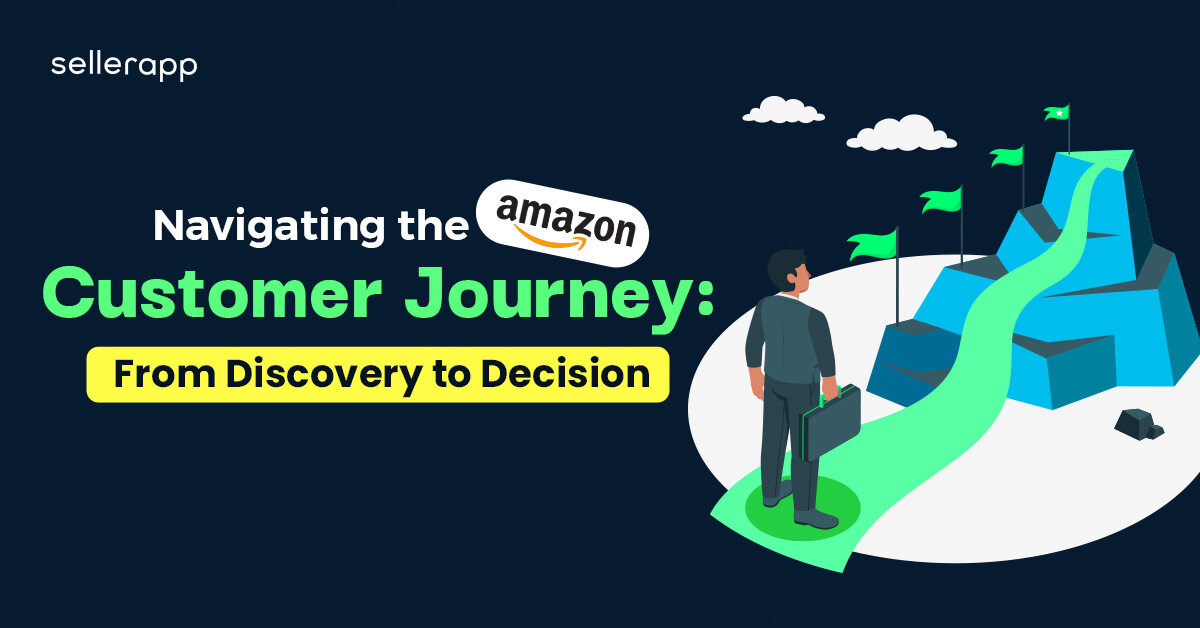
Sravanthi Munagapati
You should embrace a customer-centered approach to succeed in the business world – Not just by paying attention to the customers but by becoming truly obsessed with their needs.
In today’s rapidly evolving digital landscape, the concept of customer journey has taken unprecedented significance. The brand aims to offer loyalty and memorable experiences for its customers.
Among these e-commerce giants, Amazon stands as an example of customer-centricity, redefining how millions traverse the realm of online shopping.
In this article, we uncover the pivotal stages that shape your customer journey on Amazon from customer engagement and satisfaction to loyalty.
Quick Guide
How the customer journey on Amazon works
- What is an Amazon customer journey map?
- Why is Amazon customer journey mapping important?
- Five stages of the Amazon customer journey
How to create a customer journey map
The Amazon customer journey refers to the series of interactions, experiences, and stages that a shopper goes through while engaging with the Amazon platform and products. It consists of the entire process, from the initial awareness of a product to the post-purchase engagement and beyond.
This journey is not just limited to the transaction itself; it also includes various touchpoints and interactions that shape the customer’s perception and overall experience with your brand or similar competitors .
What is an Amazon customer journey map?
An Amazon customer journey map is a visual depiction of a customer’s entire process when engaging with the brand and its products.
It offers a clear, step-by-step illustration of the customer’s experience from the initial awareness of products or services to the final stages of post-purchase interaction. This map highlights various touchpoints, emotions, actions, and decisions that customers make along the way.
By mapping out each stage of the journey, you can gain insights into how customers interact with your brand.
The goal here is to create a more seamless, personalized, and satisfying journey for customers, ultimately leading to increased customer loyalty, positive reviews , and repeat business. The customer journey map is a valuable tool for refining strategies, optimizing processes, and aligning efforts to effectively meet customer expectations.
Why is Amazon customer journey mapping important for you?
Customer journey mapping is crucial because it offers insights into a customer’s entire experience when interacting with your products. Specifically, customer journey mapping holds significant importance due to the following reasons:
Understanding Customer Needs:
Mapping the customer journey helps you to gain a deep understanding of customer needs and preferences. This understanding is essential for tailoring products, services, and experiences to match customer expectations effectively.
Identifying Pain Points:
By visualizing the entire journey, you can identify any bottlenecks, frustrations, or obstacles customers might encounter. This information addresses customer pain points and improves the overall experience.
Optimizing User Experience:
Customer journey mapping highlights touchpoints where customers interact with your products, Amazon marketplace , customer service, and more. This insight helps you to optimize customer touchpoints to provide a seamless and user-friendly experience, leading to higher customer satisfaction and loyalty. This, in turn, increases your Customer Lifetime Value (CLV).
Personalization and Recommendations:
Mapping the journey allows you to understand the type of products that customers are interested in. You can use tools provided by Amazon like ABA ( Amazon Brand Analytics ) and advertising reports to derive insights to target your audience through ads and increase your sales further.
If you need help analyzing Amazon advertising reports, check out this article.
Full funnel optimization:
By mapping the customer journey, you can identify the most effective communication channels for different stages of the marketing funnel. This could include email updates through the brand website, push notifications , or social media engagement, running Amazon DSP ads , and ensuring customers are informed and engaged at the right moments. Targeting all aspects of the funnel helps you maximize your advertising efforts and increase your brand reach.
Recommended guide: How to optimize ads with AMC and Amazon Ad Server?
Building Loyalty and Advocacy:
A positive customer journey fosters customer loyalty and advocacy. Satisfied customers are more likely to become repeat buyers and will recommend you to others, positively impacting the brand’s reputation and revenue.
Innovation and Differentiation:
It can uncover opportunities for innovation and differentiation. You can identify unmet needs or areas where your competitors might fall short and create unique features or products to stand out.
Continuous Improvement:
The customer journey is not static; it evolves with changing customer behaviors, technologies, and market trends . Regularly revisiting the journey map enables you to adapt and improve your strategies to stay ahead.
Thus, Amazon customer journey mapping empowers you to deliver a more tailored, seamless, and delightful experience to your customers. It drives improvements across various facets of the business, ultimately leading to increased customer satisfaction, loyalty, and business growth.
What are the five stages of the customer journey?
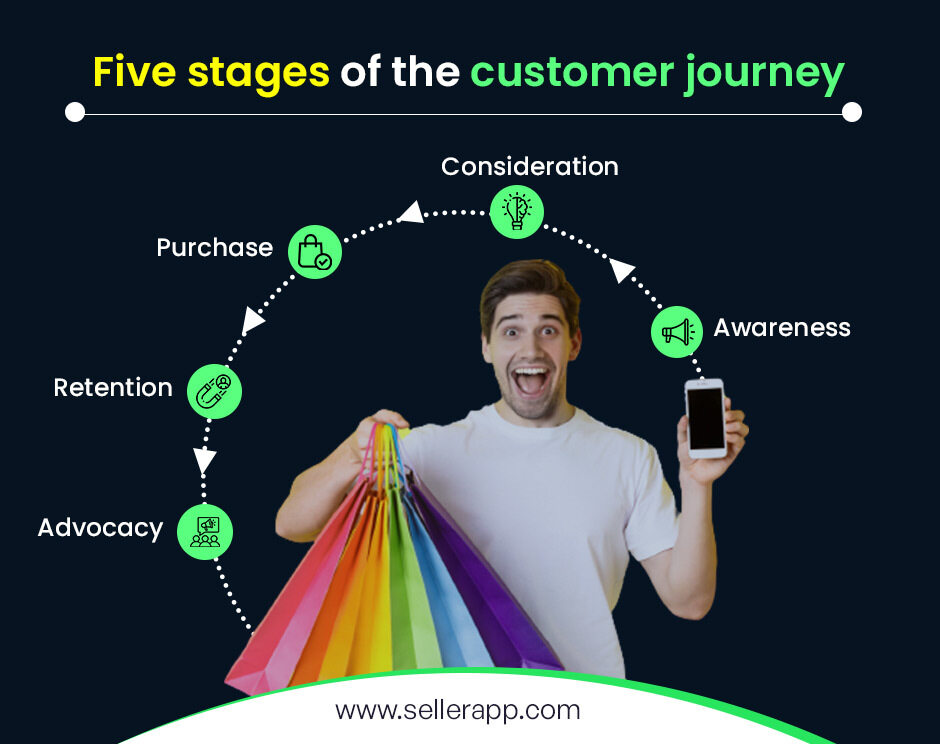
The customer journey consists of five distinct stages each with its unique benefits. These stages help businesses understand and map out the customer’s experience from initial awareness to becoming a loyal advocate.
Here’s an explanation of each stage:
The awareness stage is the beginning of the customer journey. At this point, potential customers become aware of a brand, product, or service. This awareness can happen through various channels, such as advertising , social media, word of mouth, or online searches. The goal in this stage is to capture the attention of the target audience and make them interested in learning more about what the business has to offer.
Consideration
In the consideration stage, customers are actively researching and evaluating different options . They are comparing products or services, read reviews, and seeking more detailed information. This is a crucial stage for businesses to provide informative content, showcase the unique value of their offerings, and address any questions or concerns potential customers may have. The goal is to move customers from considering options to favoring the business’s product or solution.
The purchase stage is where the customer decides to buy your product. They’ve researched and compared options and are now ready to complete the transaction. This could involve placing an order online, making an in-store purchase, or subscribing to a service. The purchasing process should be smooth, user-friendly, and secure to ensure a positive experience. Businesses should also consider offering discounts or special offers to encourage conversion.
Once a customer has made a purchase, the focus shifts to the retention stage. This stage is all about ensuring that customers are satisfied with their purchase and have a positive experience post-purchase. Providing excellent customer support, delivering a high-quality product or service, and maintaining ongoing communication are essential in this phase. Building a strong relationship with customers increases the likelihood of repeat purchases and long-term loyalty.
The advocacy stage is the pinnacle of the customer journey. Satisfied and loyal customers become advocates for the brand, sharing their positive experiences with others. They might leave glowing reviews, refer friends and family, and actively engage with the brand on social media or other platforms. Word-of-mouth recommendations from advocates carry significant influence and can bring in new customers. Businesses can nurture advocacy by continuing to provide exceptional experiences and rewards for loyal customers.
Understanding these five stages of the customer journey helps you to tailor your marketing, communication, and engagement strategies to meet customer needs at each step. By providing a seamless and positive experience throughout the journey, businesses can enhance customer satisfaction and ultimately drive growth.
To create a comprehensive customer journey map, follow these steps:
Step 1: Define Customer Touchpoints
Identify the touchpoints where customers interact with your brand. These could include interactions on your website, social media , emails, advertisements, or in-person interactions. These touchpoints will serve as the key moments in your customer journey.
Step 2: Conduct Market Research
Engage in user studies and surveys to gather insights directly from your customers. Understand how they discover your brand, what pain points they encounter, and where they interact with your offerings. This input will help refine your journey map.
Step 3: Develop Buyer Personas
Create detailed buyer personas that represent your target audience. Understand their demographics, preferences, and behaviors.
You can answer questions like:
- What’s their age?
- What are their interests?
- How do they communicate?
- What are their challenges?
These questions will help you tailor the journey map to the specific needs and expectations of different customer segments.
Step 4: Set Clear Goals
Establish clear goals for each touchpoint in the customer journey. Determine whether you’re aiming to increase brand awareness, drive sales, or enhance customer loyalty. Set a specific action plan that aligns with these goals to create a cohesive experience.
Let’s say that increasing brand awareness is your business goal. You should list the strategies that help you increase your brand reach. They could be running Sponsored brand ads , targeting competitor products, increasing social media presence, or collaborating with an influencer in the space.
Step 5: Analyze and Refine
Analyze the data collected and identify pain points, areas of improvement, and opportunities for enhancing the customer experience. Consider feedback from customer support teams to address recurring issues. Use this analysis to refine your journey map.
Step 6: Incorporate Updates
As your business evolves and shoppers’ preferences change, update your customer journey map accordingly. Regularly revisit and adjust your map to ensure it remains accurate and aligned with your brand’s goals.
These steps will let you create a customer journey map that provides a holistic view of the customer experience. Streamline your efforts to deliver a seamless and satisfying journey for your customers, and increase their satisfaction and loyalty, thereby, business growth.
The customer journey mapping on Amazon is not just about selling products; it’s about fostering relationships, anticipating needs, and delivering beyond expectations. This journey map reflects a dynamic ecosystem where convenience, personalization, and innovation converge to shape an unparalleled online shopping experience.
Do you need help in mapping your customer journey and creating a full-funnel advertising strategy? Let SellerApp help. Our team has helped 20,000+ brands like yours to strategize and execute advertising campaigns.
If you have further doubts, schedule a call with us, and our experts will get back to you!
Happy Selling!
Additional read:
What is an ASIN matrix ?
How does Amazon Marketing Cloud work?
What Is the RMA Number on Amazon?
7 Tips for Better Amazon Copywriting
Was this post helpful?
Related posts:.
- How to Turn your Amazon Product Returns into Profits!
- Uncover Expert Tips on How to Rank Higher on Amazon with Strategic Ranking Tactics
- How Repricing Fits into your Amazon Growth Stack
- How to Answer Customer Questions on Amazon
Post Written by:
4 comments on “mapping the amazon customer journey: insights and strategies”.
Kathleen Jones
Spot-on analysis, as usual. Keep shining!
Clare Thomas
Betty Stark
Short read, big impact. I love it!
Very happy to hear that.
Leave a comment Cancel Reply
Your email address will not be published. Required fields are marked *
Related posts
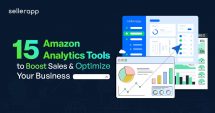
15 Essential Amazon Analytics Tools for Business Growth

Amazon Brand Registry: The Ultimate Seller’s Handbook
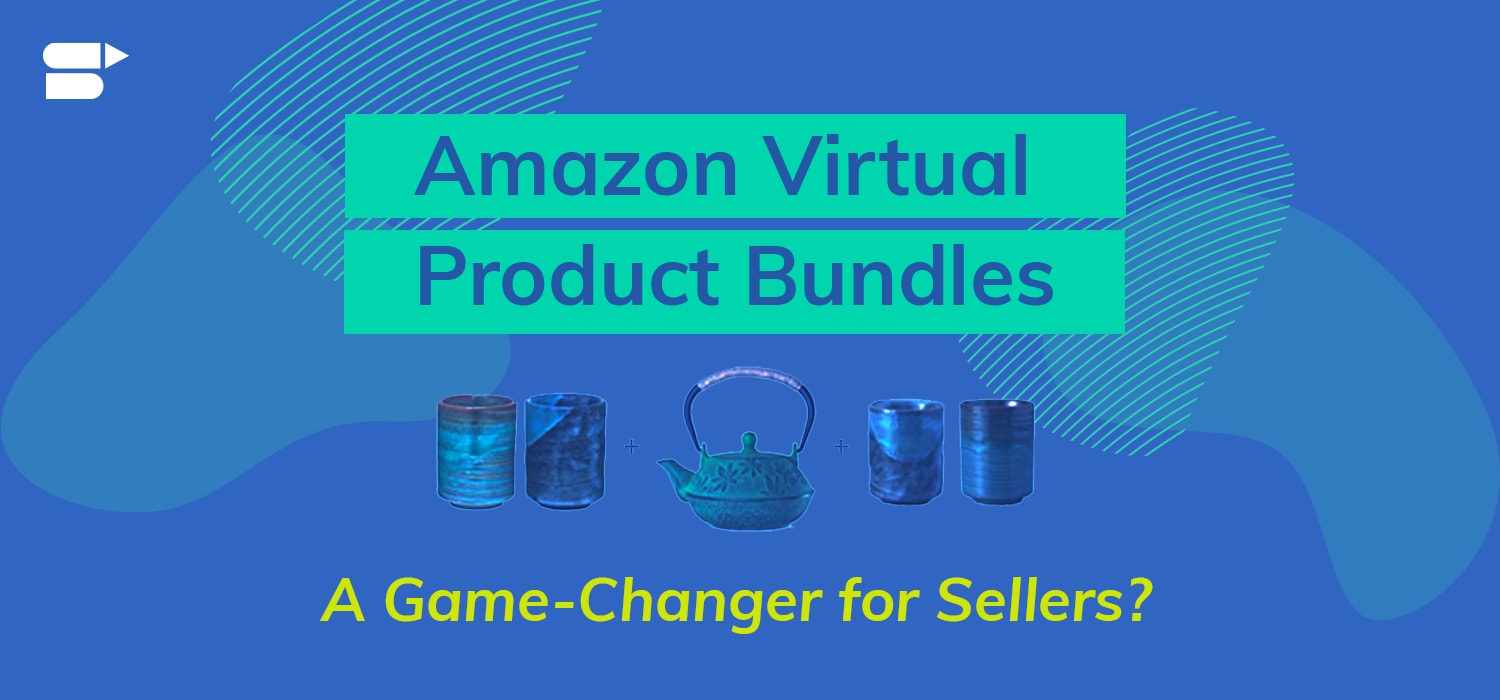
Amazon Virtual Product Bundles Program Strategies to Boost Sales
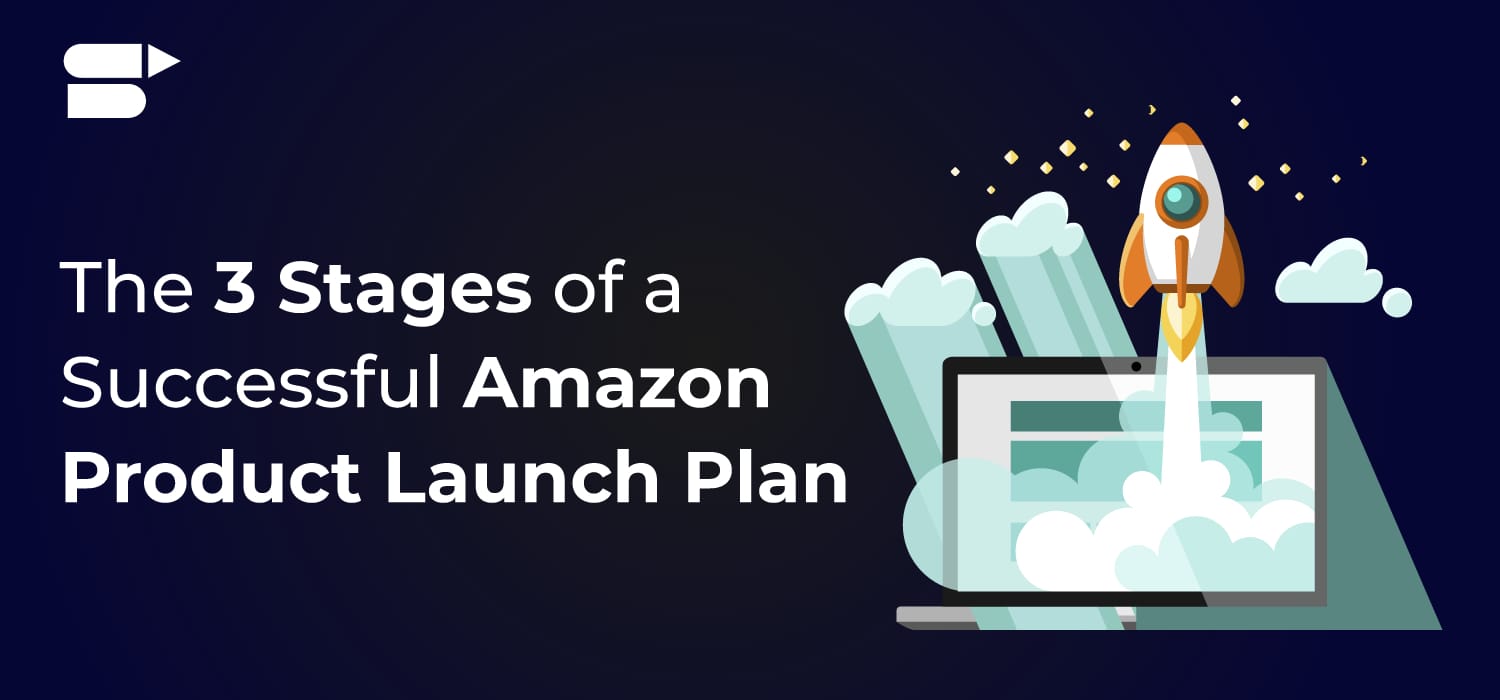
The Ultimate Amazon Product Launch Checklist – 12 Steps to Success
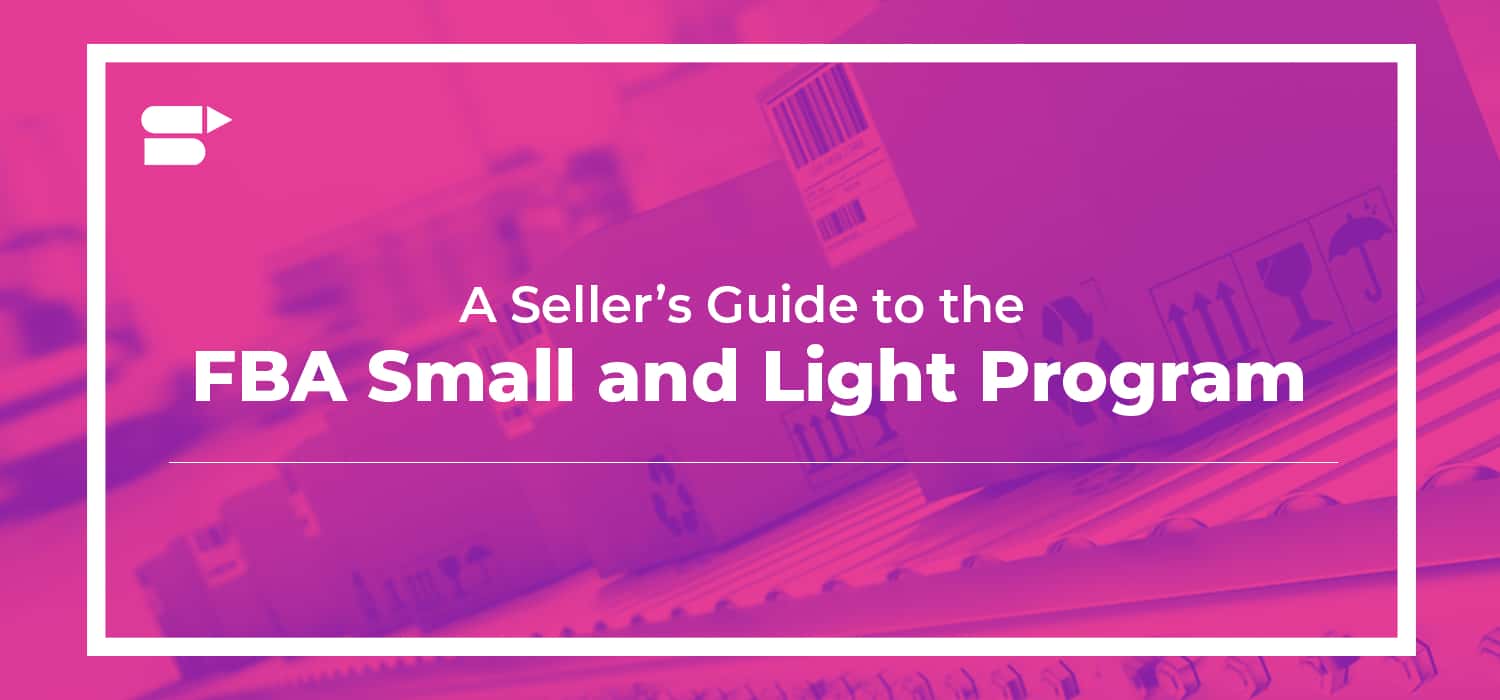
Amazon FBA small and light: All you need to know
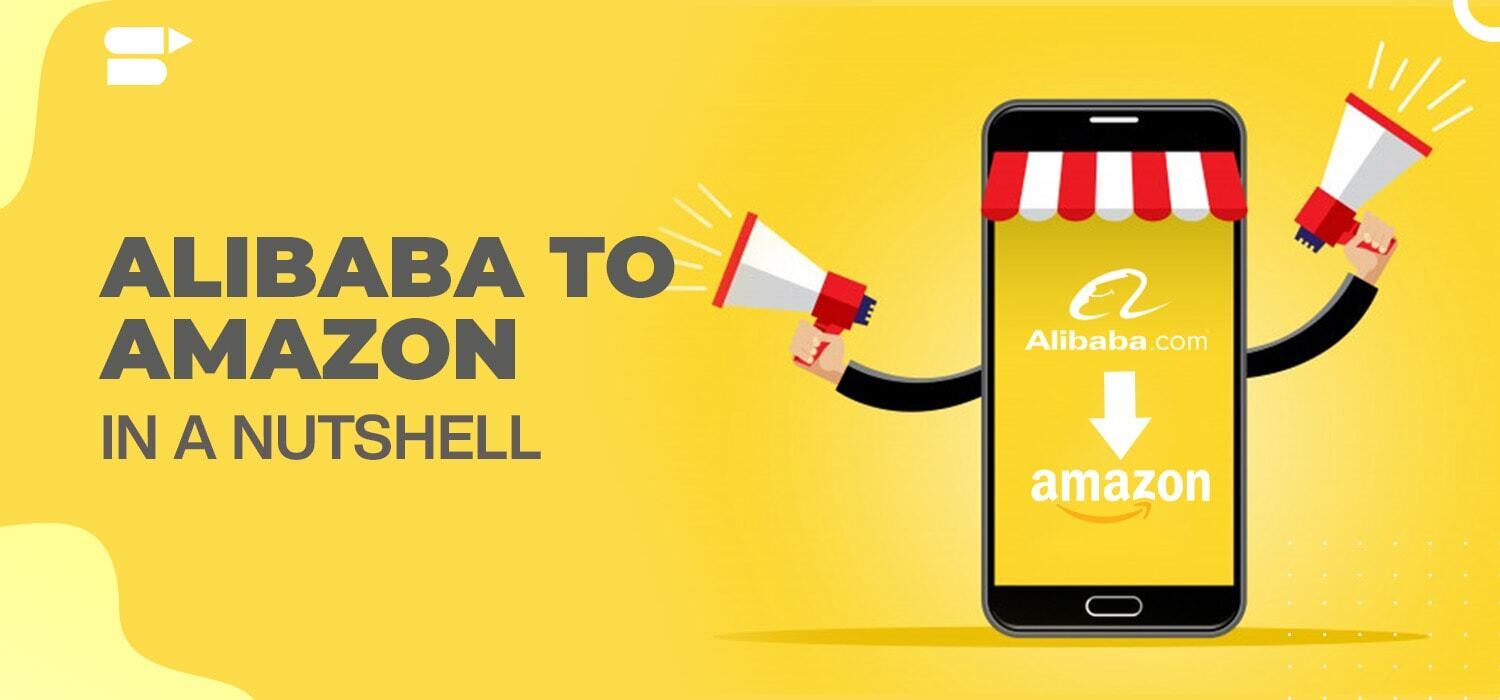
How to Source Hot Products from Alibaba & Skyrocket Amazon Sales in 2024
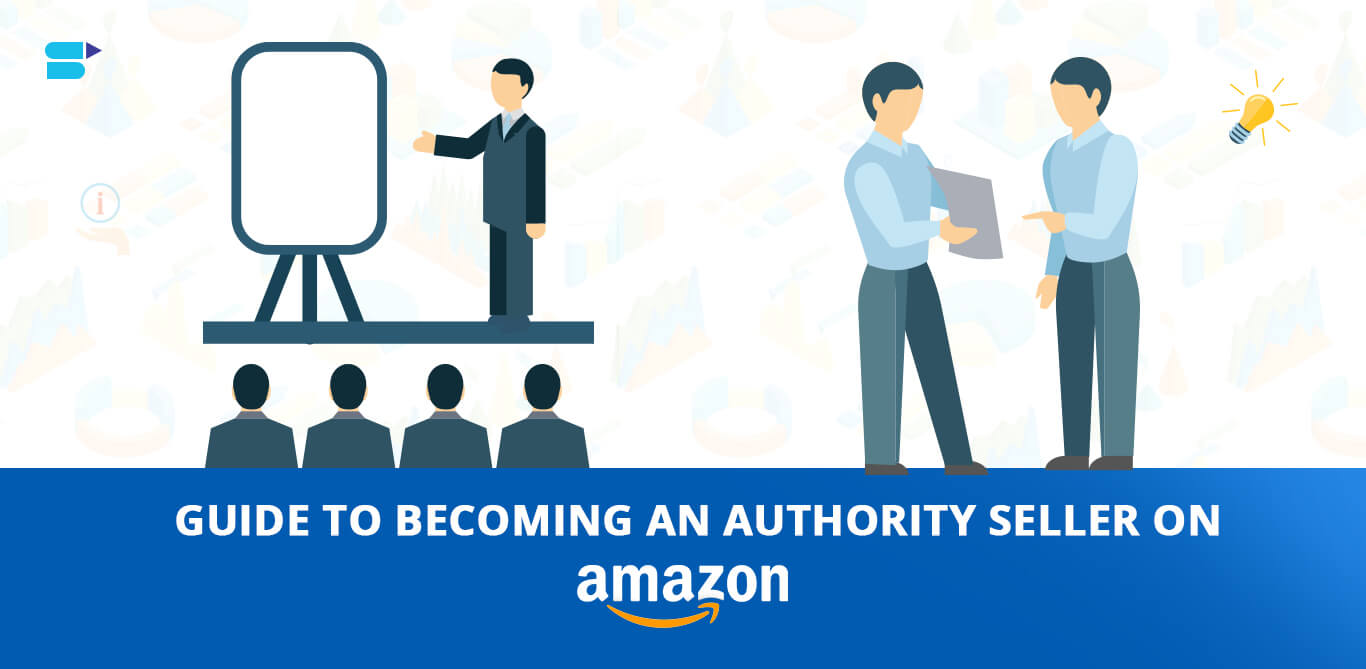
Guide to becoming an authorized seller on Amazon

Amazon Prime Day Updates – How Sellers Should Crush it in 2021

Top Amazon Black Friday Tips for Boosting Holiday Season Sales
Recent posts.
Last Updated on 4 months by Clare Thomas
Root out friction in every digital experience, super-charge conversion rates, and optimize digital self-service
Uncover insights from any interaction, deliver AI-powered agent coaching, and reduce cost to serve
Increase revenue and loyalty with real-time insights and recommendations delivered to teams on the ground
Know how your people feel and empower managers to improve employee engagement, productivity, and retention
Take action in the moments that matter most along the employee journey and drive bottom line growth
Whatever they’re are saying, wherever they’re saying it, know exactly what’s going on with your people
Get faster, richer insights with qual and quant tools that make powerful market research available to everyone
Run concept tests, pricing studies, prototyping + more with fast, powerful studies designed by UX research experts
Track your brand performance 24/7 and act quickly to respond to opportunities and challenges in your market
Explore the platform powering Experience Management
- Free Account
- Product Demos
- For Digital
- For Customer Care
- For Human Resources
- For Researchers
- Financial Services
- All Industries
Popular Use Cases
- Customer Experience
- Employee Experience
- Net Promoter Score
- Voice of Customer
- Customer Success Hub
- Product Documentation
- Training & Certification
- XM Institute
- Popular Resources
- Customer Stories
- Artificial Intelligence
- Market Research
- Partnerships
- Marketplace
The annual gathering of the experience leaders at the world’s iconic brands building breakthrough business results, live in Salt Lake City.
- English/AU & NZ
- Español/Europa
- Español/América Latina
- Português Brasileiro
- REQUEST DEMO
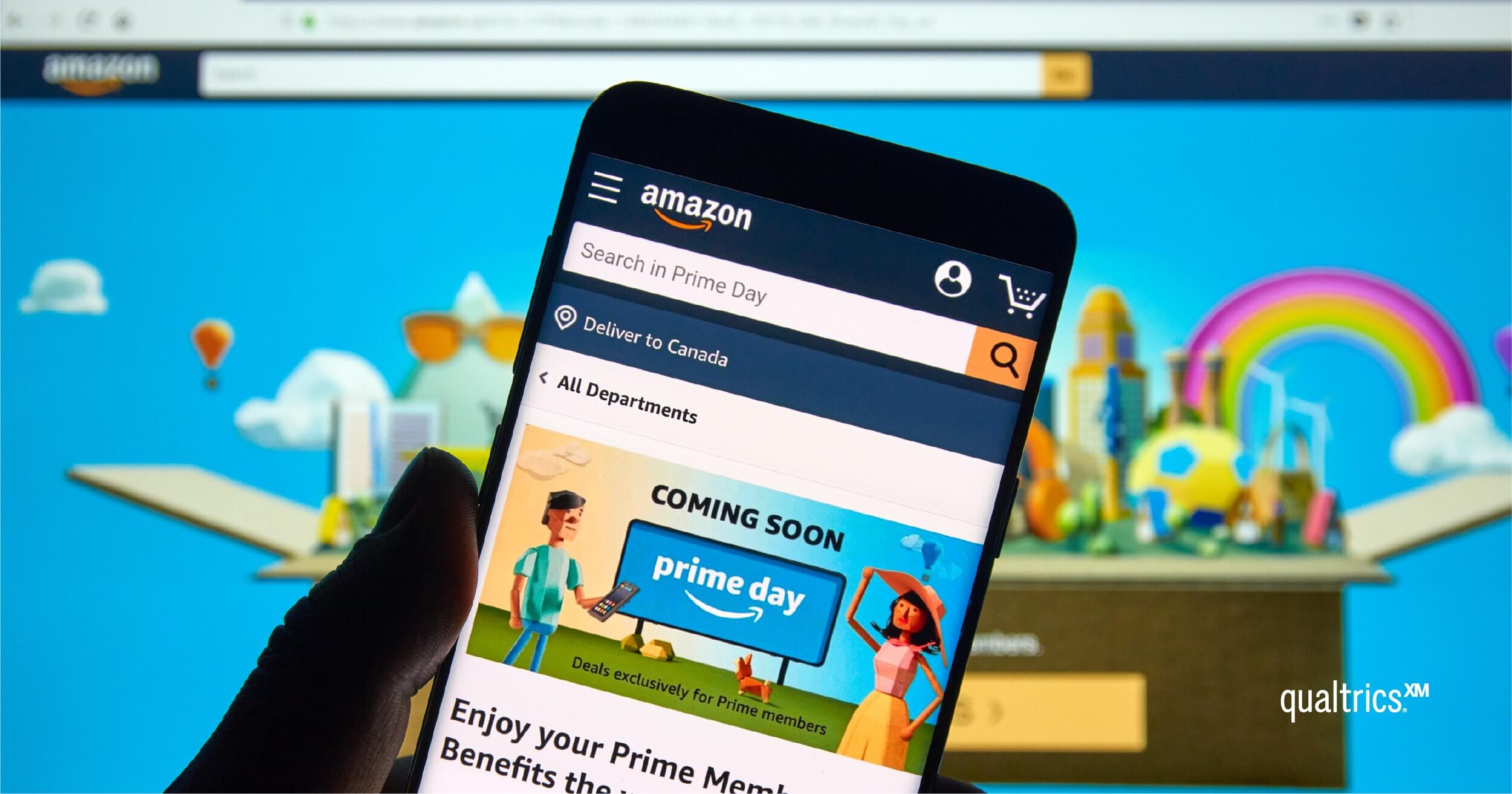
Brand Experience
Why Amazon is a leader in customer experience
Updated June 24, 2024
Amazon Prime day is upon us once more, and as the world’s biggest online retailer looks set to sell more products than ever before, it’s important to remember what got Amazon where they are - no, it’s not the products... it’s the service.
For over twenty years, Amazon has set the standards in e-commerce with almost unrivaled product inventory and competitive prices, and while that would be plenty for a successful business, what’s taken Amazon to a legendary brand is the combination of customer experience and product that keeps people coming back for more.
Delivery and returns
Amazon has been on the forefront of several innovations in terms of its logistics operation, with a whole host of options designed to make getting products from their warehouse to your doorstep with minimal effort on the user’s part.
The common denominator here is effort - whether you’re buying or returning a product, the experience is effortless - something customers are more than willing to give their loyalty for in exchange.
Delivery Options - As an online retailer, one of the biggest challenges for Amazon is competing with the “now” economy, and finding ways for people to actually receive items purchased. In order to make delivery easy for consumers, Amazon has introduced several options for shipping. Beginning with free shipping - all customers who spend $25 or more are eligible for free shipping with Amazon, and for $119 a year, Amazon Prime customers have the opportunity to get free shipping on thousands of single possible. Recently, Amazon has also introduced Amazon Lockers, which the company calls “self-service kiosks”, where a user can choose to have a package delivered for easier access to a pickup.
Physical Options - Amazon has entered the brick and mortar business by creating Amazon Bookstores , Amazon Go (a checkout-less grocery store), and purchasing Whole Foods, in order to provide immediate access in key markets for customers who are excited about the frictionless Amazon shopping experience, but require faster access to goods. For those less inclined to shop at a physical store, but still in need of goods quickly, Amazon also provides “Amazon Fresh”, which allows for same day, or scheduled delivery of groceries to your home, for an added fee, and “Amazon Restaurants” which provides delivery of meals for same day ordering.
Ordering Options - In order to actually make it easy for customers to purchase goods, Amazon has pioneered systems such as one-click ordering and “Dash” buttons. In one-click ordering, Amazon allows customers to purchase an item using pre-set options (ex. credit cards and shipping addresses), rather than having to take multiple clicks to purchase an item. With “Dash” buttons, Amazon recognizes the need of some customers to re-order certain items and allows customers to leverage the one-touch ordering options at times when they need to re-stock. In order to meet the customers at every touchpoint, Dash buttons are available on the web, in-app, using voice activation through Alexa, as well as for purchase. For example, if you have a Dash button for your Tide detergent, you can keep the button wherever you keep your Tide, and as you see the bottle running low, push the button for a quick order of new Tide.
Return Options - As a retailer, particularly online, it is also important to consider how your customers may prefer to return items. Amazon makes it easy for users to return items. Many products come with a prepaid, printed return label, though those labels are also accessible through the returns portal online. Last year, Amazon also started partnering with Kohls to put return kiosks in select locations, for customers who would prefer to make the physical drop.
Digital Service Experience
Part of providing a great product experience is to consider the digital experience for customers. As one of the first online retailers, Amazon created a model that set the standards in e-commerce.
App - One of the easiest ways to access Amazon and deals is through the Amazon app, especially for Prime Day. With the app, Prime members are able to set preview sale products and select to get notified when they become available. They are also able to order products using traditional online ordering, or Dash buttons, as well as access Amazon restaurants for same-day meal delivery.
Social Media - 72% of customers expect a response to a complaint in under an hour. Today, Customer Service via social is imperative. Amazon monitors the @AmazonHelp Twitter handle seven days a week in seven languages.
What Amazon has been able to do whether, through its website, the app or social media is to carry the experience through across multiple channels. They understand that wherever you meet their brand, they need to make an impression and provide the same customer experience that drives loyalty on other channels.
Product Experience
Building a great product is an important part of a customer’s experience. Amazon has created an ordering system that has provided several components we now expect as consumers.
Searchability - Amazon combines a Google-like ability to search with an ability to sort by Brand, Average Customer Review, Price, and availability, as well as by categories specific to the brand. This morning, I was looking for a new router to help speed up our at-home internet, and beyond the traditional preferences, I was also able to sort by connectivity type (Wireless preferred), computer type, and speed, which helps to make the best decision when it comes to equipping my home.
Product Education - To help you decide on a product, Amazon also provides the ability to learn more about how the product meets your needs. Primarily through reviews and ratings, which users can access to find out more about how a product performs compared to the actual description provided. Amazon also provides a handy recommender system to help users understand which products might best fit their needs based on terms searched, or based on products bought together by other users.
Artificial Intelligence - As part of Amazon’s mission to make life easier, they have moved beyond browser-based recommender systems, to intelligent products, like Alexa introduced in November 2014. More than a way to shop, Alexa is able to assist in playing music, setting alarms, providing news updates, and controlling networked smart devices. Like most Amazon products, the goal of Alexa is to help make your daily tasks easier and to learn to provide better suggestions while doing it.
Another of Amazon’s brands is well known specifically for being an “Experience Brand.” Zappos, former online shoe merchant, and current online apparel provider was purchased by Amazon in 2009 for $1.2 billion. Zappos is well known in for creating a culture of WOW, by not only going above and beyond for the customer, but also focusing on employee engagement - and it’s paid off with an incredible 75% rate of repeat business .
The history Zappos's service-centered is highlighted by CEO Tony Hsieh in Delivering Happiness: A Path to Profits, Passion, and Purpose , and its mantra, "Powered By Service" is right on the company logo.
As users, we have high expectations when it comes to brands, largely because of the leadership of industry pioneers. As we are building our shopping carts today, we will certainly be taking full advantage of the customer experience.
Want to learn more about creating great customer experiences?
Qualtrics compiled a reading list based on recommendations from CX leaders, like Amazon. You can download that here . Additionally, a great launching point for improving e-commerce experience is to start asking your customers how their experience has been. Use our free e-commerce purchase feedback survey template to begin gathering feedback.
This post was originally published July 2018, and updated in 2022 for brevity and clarity.
15 essential reads and podcasts for CX leaders in 2024
Chelsea Hunersen
Chelsea Hunersen is a contributor to the Qualtrics blog.
Related Articles
April 23, 2024
The original names of 25 famous companies
February 26, 2024
Understanding share of search and what it means for your business
November 7, 2023
The 4 market research trends redefining insights in 2024
August 30, 2023
Which brands have the most loyal customers?
June 22, 2023
Small tasks, big ambitions: How Airtasker designed a brand for global growth
December 6, 2022
Academic Experience
How customer experience helps bring Open Universities Australia’s brand promise to life
August 17, 2022
How to Optimize Your Research to Navigate Business Uncertainty
July 19, 2022
How Rihanna and FENTY took celebrity entrepreneurship to a new level
Stay up to date with the latest xm thought leadership, tips and news., request demo.
Ready to learn more about Qualtrics?
- Skip to main content
- Skip to primary sidebar
- Skip to footer
- QuestionPro

- Solutions Industries Gaming Automotive Sports and events Education Government Travel & Hospitality Financial Services Healthcare Cannabis Technology Use Case AskWhy Communities Audience Contactless surveys Mobile LivePolls Member Experience GDPR Positive People Science 360 Feedback Surveys
- Resources Blog eBooks Survey Templates Case Studies Training Help center
Decoding Amazon’s Exceptional Customer Journey in E-commerce
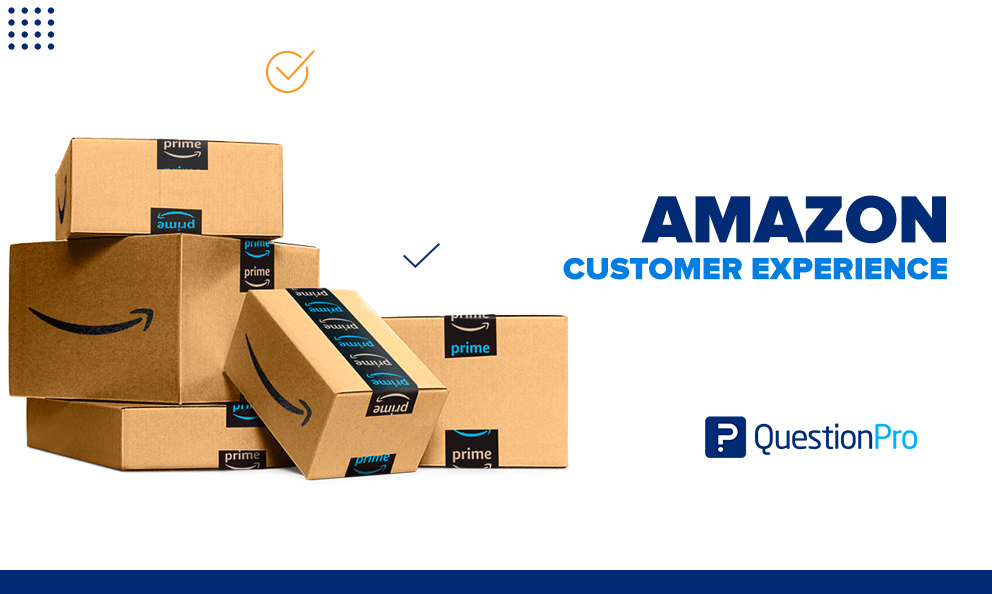
In the competitive world of e-commerce, understanding the intricacies of the customer journey is one of the most critical aspects of any business.
Its significance lies in the fact that this journey encompasses the user’s path towards fulfilling a need, or in simpler terms, the process a customer undergoes when making a purchase.
The use of this methodology, combined with other customer service techniques, has enabled companies like Amazon to become leaders in customer experience. Therefore, this article will analyze some aspects that have allowed the e-commerce giant to grow and satisfy its customers.
Unveiling the Amazon Customer Journey
Like many e-commerce companies, Amazon pays special attention to its touchpoints with its customers at each stage of their customer journey. This allows them to make relevant improvements and always seek to optimize resources and simplify the purchasing process for users.
Learn why understanding your Customer Journey critically transforms your customer experience programs for the better.
The vast amount of data makes measuring this precisely and evaluating each point with great accuracy possible.
Some of the stages and actions that Amazon considers are as follows:
1. Awareness:
As a digital company, Amazon invests heavily in digital media but also uses traditional media to expand their brand reach.
2. Consideration:
The consideration stage involves nurturing the seed of interest planted during the awareness phase . By doing so, they foster a sense of consideration among potential buyers. Amazon handles this perfectly by offering perfectly structured and attractive information on its portal.

3. Decision: Sealing the Deal
The decision stage is where customers make the final call. To ensure success, optimize your product listings, leverage customer reviews, and employ strategic pricing. This step is pivotal in converting potential buyers into satisfied customers. Amazon’s shopping cart is an excellent example of this.
4. Brand Retention: Fostering Long-Term Relationships
Amazon’s unique contribution to the customer journey lies in incorporating user retention . Post-purchase engagement becomes paramount at this stage. Implement strategies like personalized follow-ups, exclusive offers, and seamless customer service to fortify the bond with your clientele.
5. Advocacy: Turning Customers into Promoters
The final frontier in the Amazon customer journey involves transforming satisfied customers into brand advocates. Encourage reviews, testimonials, and social media sharing. A positive customer experience here becomes a powerful tool for organic brand promotion.
Example of Amazon’s Customer Journey
To provide a more explicit example of how Amazon’s Customer Journey would look, we’ve created one that considers the most common touchpoints within e-commerce companies. This way, you can observe each stage and some of their most common and effective actions.
Stage 01: AWARENESS
Stage 02: consideration, stage 03: conversion, stage 04: loyalty, stage 05: advocacy, crafting your own success story.
Understanding and optimizing your customer journey is the key to unlocking unparalleled success for e-commerce companies. Tailoring your brand strategy to align with these five stages will boost conversions and cultivate unwavering customer loyalty.
Embrace the customer-centric philosophy, and let your brand thrive in the ever-evolving e-commerce landscape.!
If you need assistance evaluating customer satisfaction levels or creating your first customer journey map, QuestionPro will gladly help. Not only do we have a wide range of tools and functions for any action that allows you to delve into the minds of your consumers, but you will also have access to a group of professionals who will support you in your project.
Would you like to learn more? We invite you to read more about our customer satisfaction management software and encourage you to improve your service to grow beyond your imagination.
MORE LIKE THIS
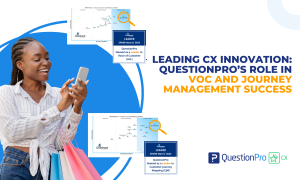
QuestionPro: Leading the Charge in Customer Journey Management and Voice of the Customer Platforms
Sep 17, 2024
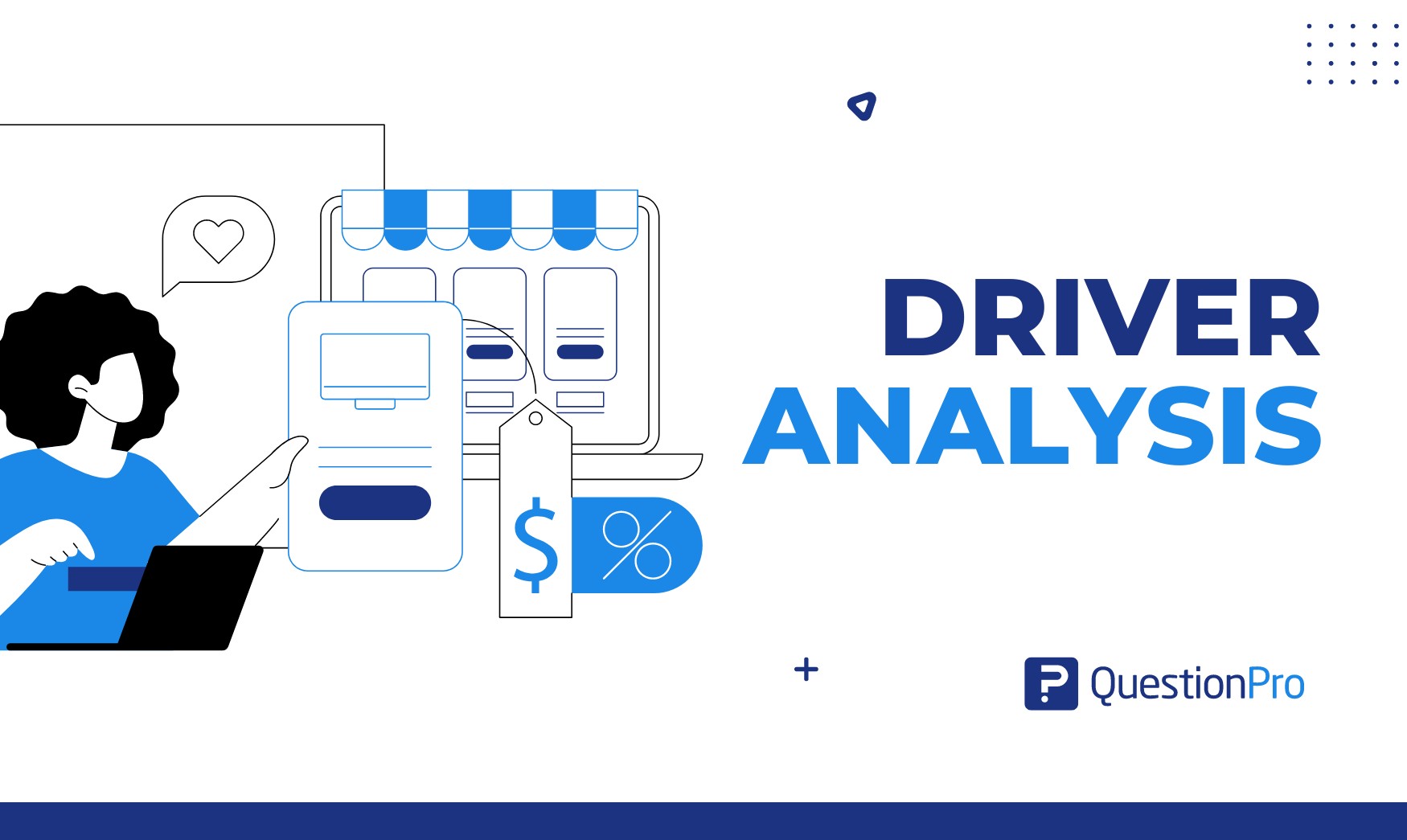
What is Driver Analysis? Importance and Best Practices
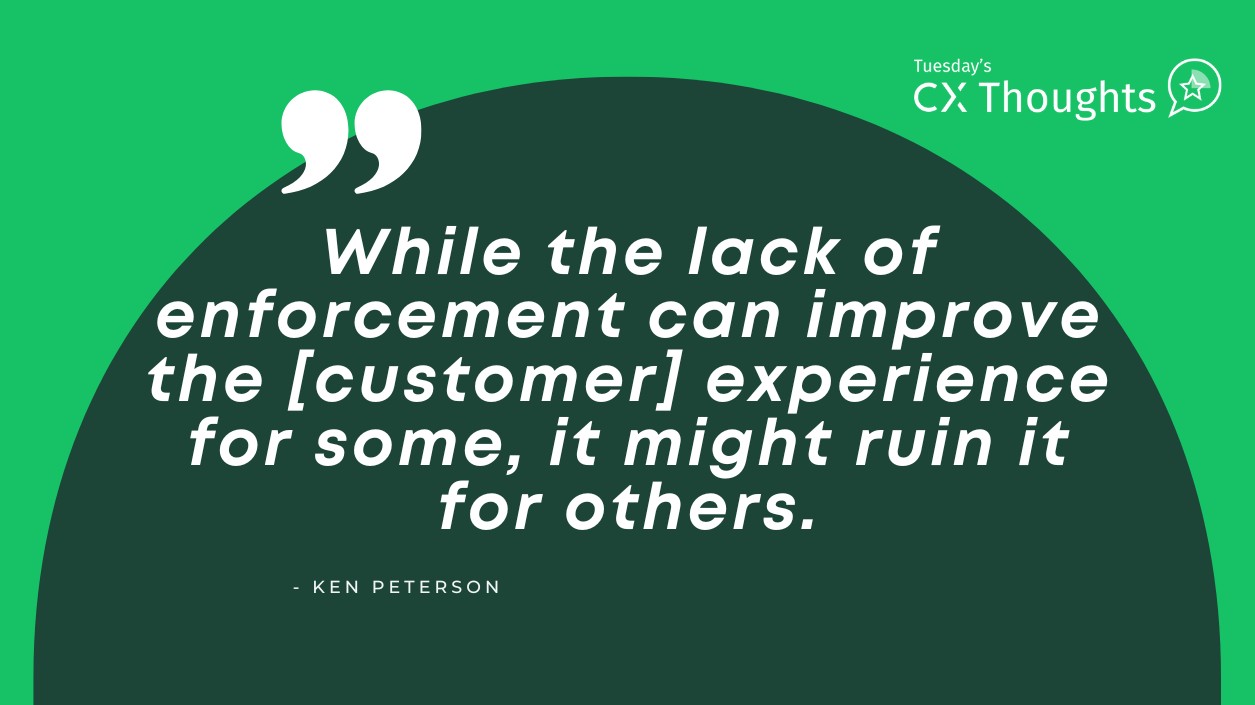
Was The Experience Memorable? (Part II) — Tuesday CX Thoughts
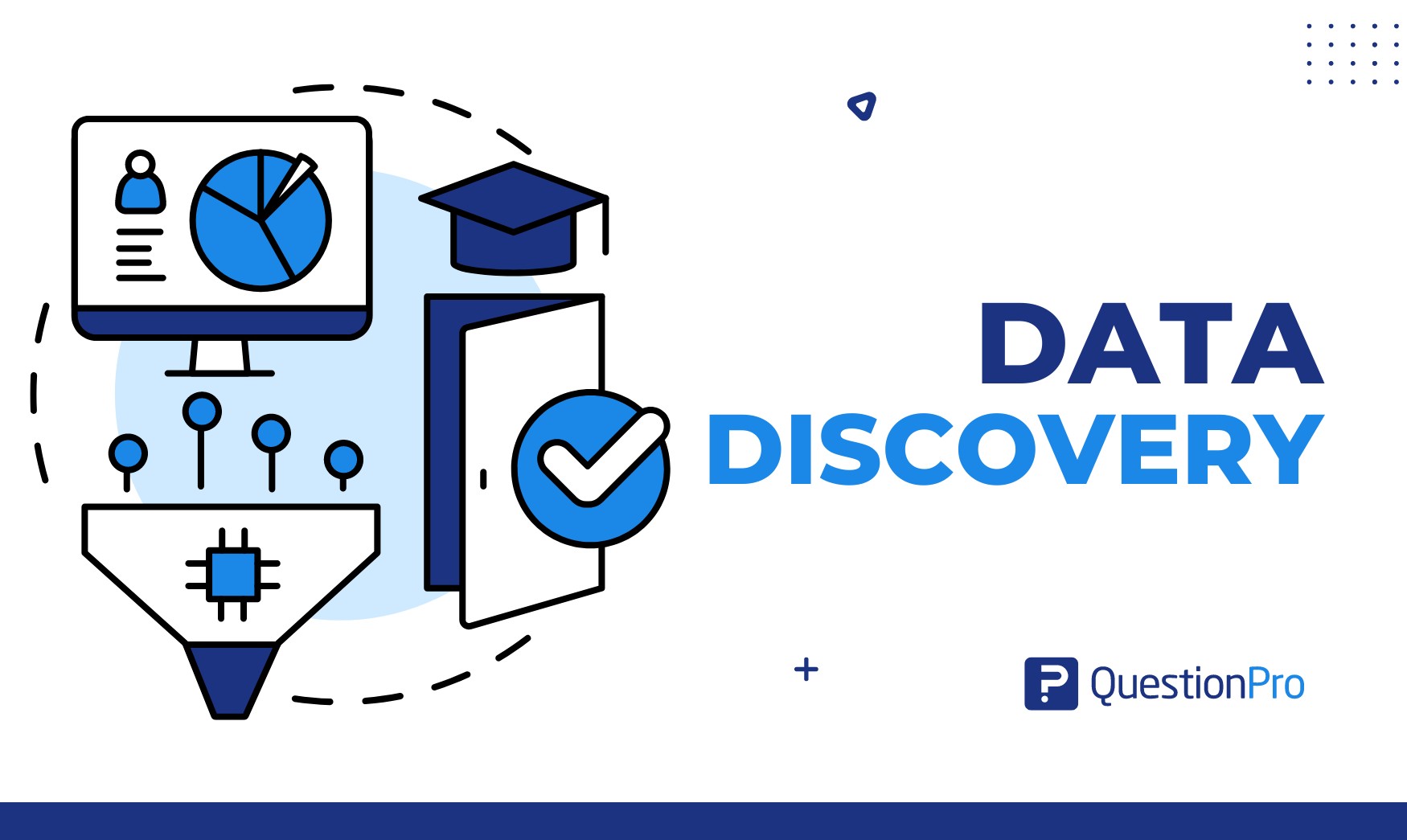
Data Discovery: What it is, Importance, Process + Use Cases
Sep 16, 2024
Other categories
- Academic Research
- Artificial Intelligence
- Assessments
- Brand Awareness
- Case Studies
- Communities
- Consumer Insights
- Customer effort score
- Customer Engagement
- Customer Experience
- Customer Loyalty
- Customer Research
- Customer Satisfaction
- Employee Benefits
- Employee Engagement
- Employee Retention
- Friday Five
- General Data Protection Regulation
- Insights Hub
- Life@QuestionPro
- Market Research
- Mobile diaries
- Mobile Surveys
- New Features
- Online Communities
- Question Types
- Questionnaire
- QuestionPro Products
- Release Notes
- Research Tools and Apps
- Revenue at Risk
- Survey Templates
- Training Tips
- Tuesday CX Thoughts (TCXT)
- Uncategorized
- What’s Coming Up
- Workforce Intelligence
Ecommerce Customer Journey Mapping [+ Tips & Template]
Published: May 30, 2024
An ecommerce customer journey map helps you drive better business results whether you’re an ecommerce business owner or a marketing manager for an online store.
![customer journey amazon How to map your ecommerce customer journey [with template]](https://www.hubspot.com/hs-fs/hubfs/ecommerce-Sep-13-2023-09-08-01-7144-PM.png?width=595&height=400&name=ecommerce-Sep-13-2023-09-08-01-7144-PM.png)
While ecommerce journeys may be quicker than business-to-business buying cycles, that doesn’t mean they have fewer customer touch points. It’s crucial to understand your buyers’ stages and the touch points that influence each sale.

In this guide, I’ll show you how to improve and map your ecommerce company's customer journey.
Table of Content s :
What is the Ecommerce Customer Journey?
Why is the ecommerce customer journey important, stages of the ecommerce customer journey, how to improve your ecommerce customer journey, ecommerce customer journey map.
The ecommerce customer journey traces a shopper's path from product discovery to purchase and beyond. It begins with awareness, moves to consideration where buyers weigh options, and ends with purchasing. Post-purchase experiences — like product usage and support — follow next, fostering repeat purchases and, potentially, brand advocacy.
In the awareness stage, customers might hear about your product through social media ads, find it through search engine results, or get word-of-mouth recommendations. Think of shoppers as explorers looking for a promise of something new.
As they move into consideration, they become discerning evaluators, comparing prices, reading customer reviews, and envisioning how your product fits into their lives.
Upon buying your product at the decision or conversion stage, new customers experience your product's features, enjoy its benefits, and even share it with friends. Your customer service takes over at this point as buyers encounter challenges or have questions related to product usage.
Finally, satisfied buyers become loyal customers in the retention stage and then, hopefully, brand advocates in the advocacy stage, spreading the word about your product.
.webp)
Free Customer Journey Template
Outline your company's customer journey and experience with these 7 free templates.
- Buyer's Journey Template
- Future State Template
- Day-in-the-Life Template
Download Free
All fields are required.
You're all set!
Click this link to access this resource at any time.
The ecommerce customer journey goes beyond tracking clicks. It’s central to decoding the hidden signals that make customers buy. Even after years in marketing, mapping customer journeys remains my go-to process for uncovering invaluable insights into buyers’ behavior, preferences, and pain points.
For starters, I have more control of my marketing and sales efforts as each step in a customer’s digital voyage unveils opportunities for optimization and innovation. From the moment they land at an online store to the final checkout process, every interaction shapes their perception, influences their likelihood of return, and cultivates brand loyalty.
Analyzing their paths empowers me to address these critical questions:
- Where do they hesitate to take action?
- What triggers their interest?
- Why do they abandon carts?
Armed with answers, I can tailor my marketing strategies to fit their experiences, address their concerns, and foster trust.
This understanding helps me devise smarter marketing campaigns, personalized product recommendations, and better user interfaces.
The takeaway is that an accurate map of your customer journey paves the way to improved conversions, retention, and brand advocacy.
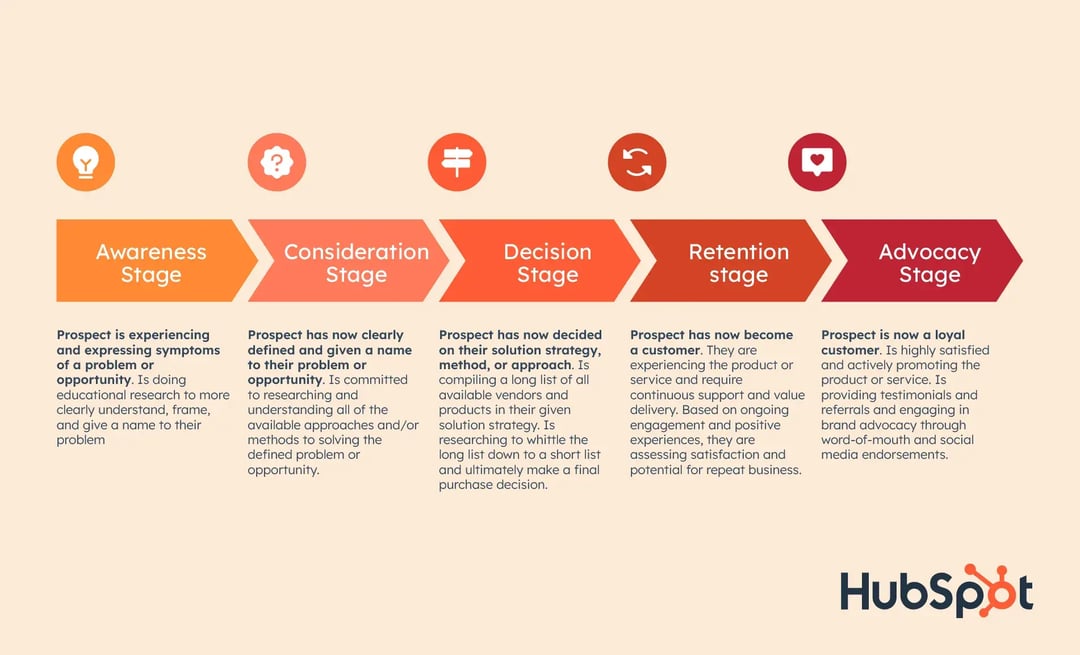
1. Awareness
Potential customers become aware of problems and start researching to understand them better. In the process, they seek relevant solutions, dispel misconceptions, and consider solutions.
For instance, let’s say your shop sells products to help customers get organized and stay on task. If your prospect wants to establish a morning routine, they might start with a casual online search. After browsing through Google and catching sight of social media ads, they consider starting a journal to document their morning routine.
2. Consideration
During the consideration phase, shoppers weigh various products and strategies to address their needs.
Your prospect now has a clearer understanding of their purchase intent and starts vetting potential solutions. They may begin scouring ecommerce platforms like Amazon or even Google for available morning routine journals and evaluating their reviews.
3. Decision
In the decision stage, customers compare the features and prices of various options and then narrow down their choices. They weigh benefits against costs, seeking the best value.
Ultimately, shoppers will buy your product if it satisfies their needs or desires. For instance, perhaps your journal includes tips to help them establish their new routine.
4. Retention
The quality of your products and customer service is crucial to the customer retention stage. HubSpot’s 2024 Consumer Trends Report found the top purchasing factors for consumers include product quality (51%) and past experiences with a product or brand (25%) .
If your morning routine journal arrives late or poor packaging has led to ripped pages, your customer might not check out your other products.
Conversely, positive experiences encourage repeat purchases.
To boost retention, you can also employ strategic marketing, using ads retargeting and social media posts to keep products visible to previous buyers. Exposing your products frequently to delighted customers through a consistent, omnichannel presence improves your chances of attracting them to repurchase.
5. Advocacy
Prioritizing customer satisfaction fosters lasting business relationships. Customers at this stage will provide testimonials and advocate for your brand through word-of-mouth and social media endorsements.
If you habitually give first-time and repeat customers positive experiences, they’ll return, join your loyalty program, and bring their circle on board, increasing your customer lifetime value.
You can deepen your understanding of the ecommerce customer journey with HubSpot Academy’s free Ecommerce Marketing Course .
Understanding how the ecommerce customer journey works sets the stage for enhancing your own. In this section, I’ll show you how to use proven engagement principles to convert more customers.
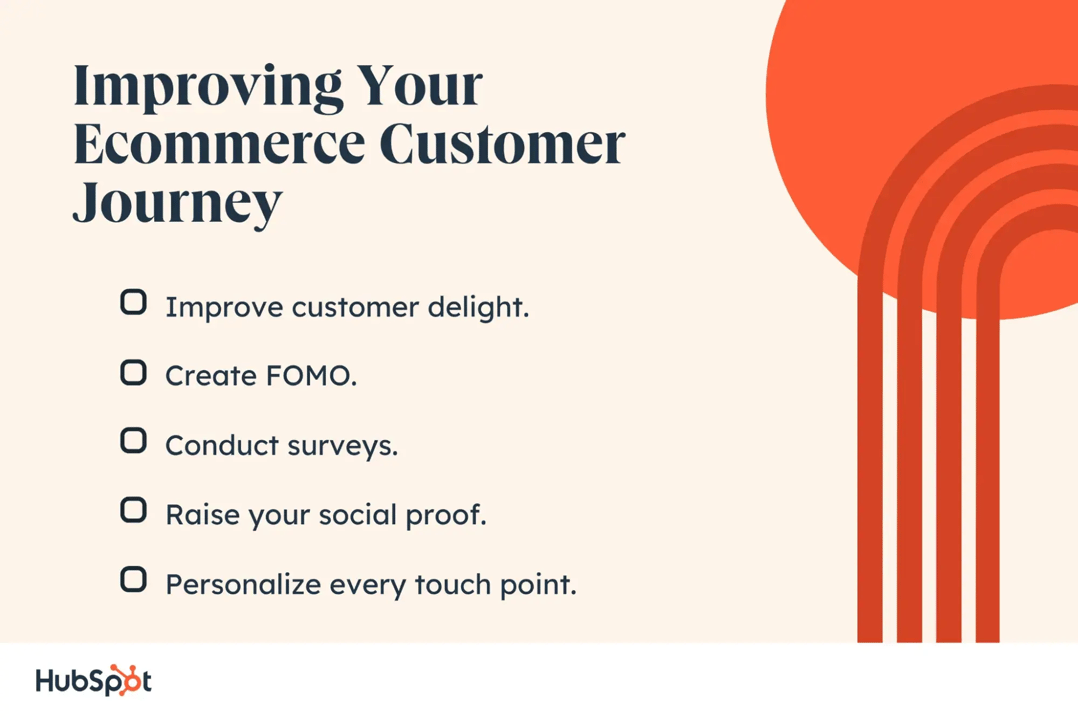
1. Improve customer delight.
Customers who enjoy interacting with you are more likely to journey with your brand. The more you delight customers, the higher your campaigns’ conversion rates and the deeper customers engage with your brand.
Here's how to get a sea of happy customers:
- Personalize rewards for birthdays or special events.
- Host exclusive events.
- Provide branded swag.
- Cultivate a brand community.
- Surprise with flash sales or loyalty discounts.
- Engage one-on-one on social media.
Pro tip: What delights my customers may not delight yours, so be creative and keep exploring ways to build lasting connections.
2. Create FOMO.
The fear of missing out (FOMO) is the anxiety of feeling left out from enjoyable experiences others are having. Renowned business psychologist and author Robert Cialdini popularized the idea in his book Influence .
FOMO is one of the most potent marketing tools I use across all customer journey stages.
You can rouse this feeling in any of these ways:
- Display the number of products in stock.
- Add a sale countdown timer on the product page.
- Show a count of product views hourly or daily.
- Stress limited supplies.
- Spotlight event dates and set up a countdown email series.
At first, using FOMO may feel uncomfortable because you don’t want to come off as manipulative to buyers.
But FOMO is only a tool. It’s how you use it that makes it good or bad.
Customers have thanked me for notifying them that a product is on sale or an item they’re interested in will be out of stock soon.
3. Conduct surveys.
Search and market data give me a bird's-eye view of patterns in customer behavior and demographic metrics, but surveys help me get personal with them. Talking to customers online or in person helps unearth insights other data collection methods might miss.
I like to use both real-time survey methods — like video or phone calls and in-person or online chats — as well as prerecorded options, such as forms, videos, SMS, website pop-ups, and emails.
When I create surveys, I aim to gather information that expounds on what I learned from my initial audience research. I typically ask my customers questions related to why they act or feel a certain way.
For example, I may ask:
- Why choose us over competitors for this product?
- Which alternatives or competitors did you weigh before buying?
- What key issues do you need [product] to address?
- What's your budget for this solution?
- What [product] features do you prioritize and why?
The insights I gather from these questions reveal preferences and patterns among my target audience that will inform my business decisions.
For instance, if millennials are willing to spend $500 and boomers $1,500 on my product, I might adjust my offerings and messaging to attract boomers more.
4. Raise your social proof.
Customers have an easier time acting on recommendations and feeling confident when they see they’re not alone.
So, I engage the power of social proof.
Social proof is where people look to others' actions or opinions to guide their behavior. And it works. Over 20% of consumers (and 36% of millennials) have purchased a product in the last three months based on an influencer’s recommendation.

Here’s how I use it:
- Showcase reviews and testimonials.
- Display purchase count.
- Feature social media mentions.
If I can ensure shoppers see that others like my products, it boosts their likelihood of buying from my brand.
5. Personalize every touch point.
Nowadays, buyers expect you to call them by name. I go beyond this and create personalized journeys that meet customer needs and expectations using customer data from every touch point.
Here’s how I offer personalized experiences:
- Include the contact's name in messages.
- Customize offerings by location, purchase, or browsing history.
- Tailor exit pop-ups to each stage of the buyer journey.
- Craft offers that match prospective customers’ desires.
Thanks to HubSpot’s marketing automation software and my customer data, I can deliver unique experiences at scale. (As a HubSpot employee, I may be biased, but I’ve found that this tool is easy to use and can automate virtually any marketing task.)
For more tips, I recommend you read this article on customer journey thinking and watch the video below.
Now that we understand how the ecommerce customer journey works and ways to make it better, let's bring it to life with a map.
An ecommerce customer journey map shows the different steps your customer goes through and helps you plan how to improve each customer touch point. It highlights where they are in the buying process, their goals, and how they interact with your ecommerce store at various stages.
Use the ecommerce customer journey template below as your launchpad. Consider your customers’ thoughts, feelings, actions, and research interests to uncover how they arrive at buying decisions.
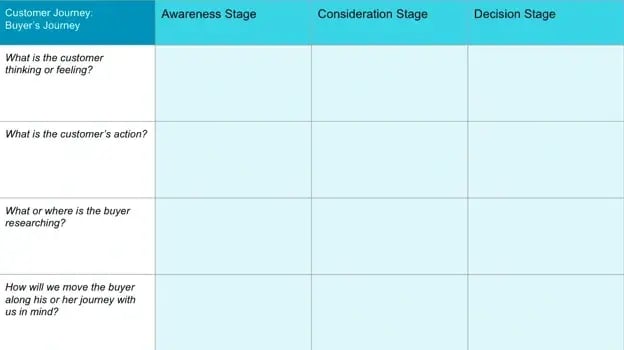
What is the customer thinking or feeling?
Weigh your ideal customer’s thoughts and motivations across the awareness, consideration, and decision stages. Empathizing with, understanding, and addressing buyers’ expectations and worries helps guide them smoothly throughout the buying process.
Let’s assume a prospect is looking to go camping in the winter and exploring my outdoor gear web store for answers:
- Awareness. They're going camping in the winter for the first time and feel unsure about packing. They want to know what gear to buy and how to pack it in a simple and compact way.
- Consideration. They're comparing winter camping gear and feel uncertain about what to buy. They seek advice through blog posts and forums on finding compact, easy-to-use equipment to make their camping trip successful and enjoyable.
- Decision. The prospect decides to buy my brand’s winter camping gear. They feel more confident and prepared for their first winter camping adventure.
- Retention . Their new gear helped make their winter camping trip a success. They trust my brand, feeling confident in the quality and reliability.
- Advocacy . Impressed by the gear's performance, they share positive reviews online, encouraging others to buy the same equipment.
What is the customer’s action?
In my experience, customers can move forward from, return to, or repeat a previous stage or drop off the flywheel at any point in their journey.
Here’s how it could play out using that prospective customer from the winter gear example:
- Awareness. They want information about staying warm while camping in the winter, so they exchange their email address for my free warm-clothing guide and access to my community of winter camping buffs.
- Consideration. The prospective customer is considering thermal wear and other winter camping gear. So, they watch a live demo of how to combine thermal wear with other clothing items.
- Decision. The customer is serious about buying and looks for a discount.
- Retention . The customer asks follow-up questions to help them use the thermal wear and returns for more equipment for future adventures.
- Advocacy . My responsiveness to their questions and support requests wins them over, so they subscribe to my referral program.
What or where is the buyer researching?
Buyers forage for information from disparate sources before reaching a decision.
So, here’s how their research journey will go:
- Awareness. They engage with blogs, white papers, social posts, and short videos to find the information they need and answer questions about preparing for winter camping.
- Consideration. The prospect is now curious about camping gear, like outdoor heaters, lighters, lanterns, sleeping bags, camping chairs, thermal clothing, and backpacks to carry it all. So, they’re comparing the best options, reading case studies, and watching longer videos to help them understand the benefits and drawbacks of these items.
- Decision. They buy their preferred camping items from my website after weighing each product through buyer reviews, samples, and specification sheets and using my chatbot to ask questions.
- Retention . They might visit competitor websites or even buy competitor products to compare them with mine. They’ll also review post-purchase support documents.
- Advocacy . When referring a potential buyer, they’ll share my blog posts, guides, and knowledge base articles to educate their friends and contacts about my product.
How will we move the buyer along their journey with us in mind?
Using incentives in your calls-to-action (CTAs) can drive a faster response, and subtle messaging can guide buyers along their path.
Going back to the winter camping gear example, here’s what that could look like:
- Awareness. I ask prospects for their email address in exchange for free guides on how to choose the best camping gear for their needs.
- Consideration. Once I have their contact information, I’ll engage my leads with more valuable content related to winter camping, warming them up to chatting with my sales team or buying my camping gear.
- Decision. I demonstrate that I’m placing the customer’s interests ahead of profits by being honest about what my product can and can’t do. Whether the customer is ready to close a deal, sign up for a lesser offer, or part ways, I work to keep them in my flywheel for future sales or referral opportunities.
- Retention . I respond quickly to post-purchase questions and provide detailed user guides. I also offer free replacements for defective products.
- Advocacy . I proactively invite and incentivize customers to review and rate products and join my referral and loyalty programs .
Here’s what my map for the winter camping gear example would look like.
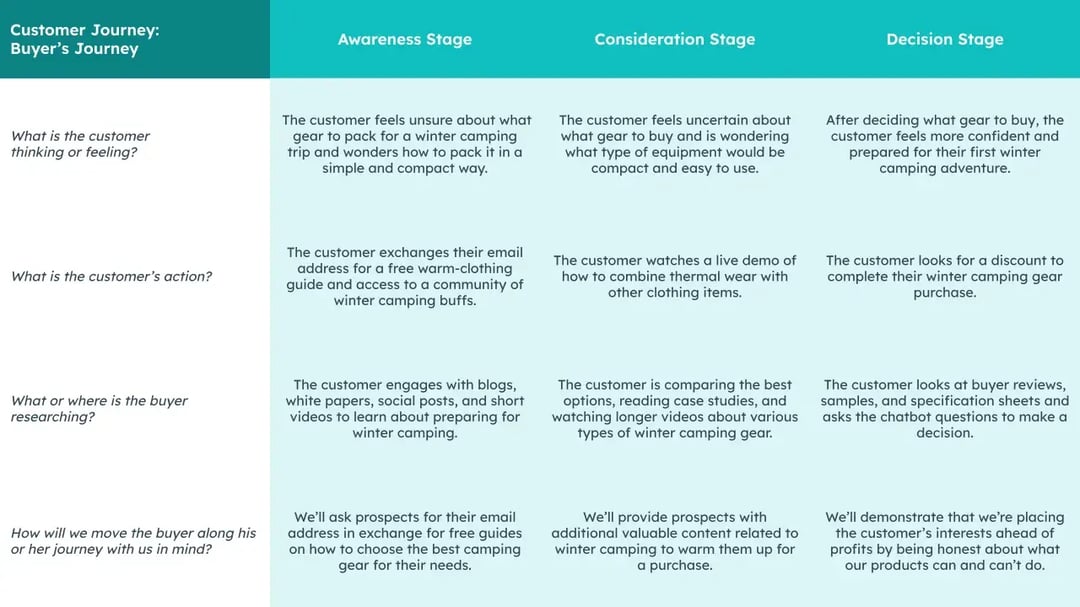
How to build an ecommerce customer journey map
Here are some tips for building and using your customer journey map:
- Define objectives. Clarify your goals, such as understanding pain points or enhancing the user experience.
- Identify personas. Create a detailed customer persona , including demographics, behaviors, and needs, to tailor the map and visualize your ideal customer’s experience.
- List touch points . Identify all points of interaction between your customer and business, from initial awareness to post-purchase. Consider taking the HubSpot Ecommerce Marketing Course to learn how to improve the user experience in every stage.
- Gather data. Collect quantitative and qualitative data from customer feedback, surveys, analytics, and interviews to understand experiences at each touch point.
- Map the current journey. Visualize the current customer experience by plotting the touch points and data on a timeline or diagram. Then, use a template to map your user journey.
- Identify pain points and opportunities. Highlight areas where customers face challenges and opportunities to improve their experience.
- Develop solutions. Brainstorm and highlight changes or enhancements to address identified issues, enhance your touch points for search engine optimization (SEO), and improve your user journey.
- Implement changes. Put the proposed solutions into action and adjust your processes, technology, or communication strategies accordingly.
- Track and update. Continuously track the performance of implemented changes and update your journey map to reflect new insights and business developments.
Here’s the takeaway: Mapping your ecommerce customer journey is vital for targeting the right audience and ensuring a great customer experience. Happy customers typically stick around longer and attract more buyers.
Creating the Best Ecommerce Customer Journey Possible
The best online shopping experiences result from understanding how customers go through the buying stages. Although the ecommerce shopping cycle is swift, customers still interact with multiple touch points before they buy, so you must plan carefully.
As a marketer, I rely on data, templates, and proven strategies to optimize each stage of the ecommerce customer journey. Delighting customers, creating a sense of urgency, asking for feedback, showing off happy customers, and personalizing experiences are all proven ways to generate desirable results.
In the end, a well-made map of how customers will experience your online shop helps attract more buyers, keep them coming back, and get them talking about your brand.
Ready to start? Look below for free templates to map your ecommerce customer journey.
Editor's note: This post was originally published in October 2023 and has been updated for comprehensiveness.

Don't forget to share this post!
Related articles.
![customer journey amazon 50 Ecommerce Statistics To Know in 2024 [New Data]](https://www.hubspot.com/hubfs/ecommerce-statistics.png)
50 Ecommerce Statistics To Know in 2024 [New Data]

Top 16 Ecommerce Platforms of 2023: Find the Best One for Your Business

What is a Flash Sale in Ecommerce? 6 of Our Favorite Examples

Fixed Cost: What It Is & How to Calculate It

14 Ways to Automate Your Ecommerce Business

How Ecommerce Businesses Build Healthy Relationships With Customers
![customer journey amazon The Beginner's Guide to Product Photography [Tutorial + Examples]](https://www.hubspot.com/hubfs/guide%20to%20product%20photography.jpg)
The Beginner's Guide to Product Photography [Tutorial + Examples]

Variable Cost Explained in 200 Words (& How to Calculate It)
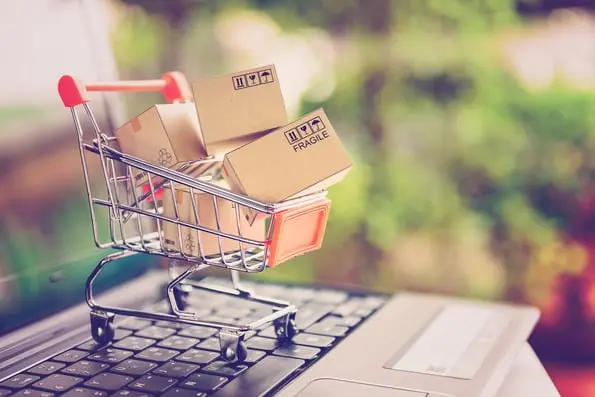
The Ultimate Guide to Ecommerce
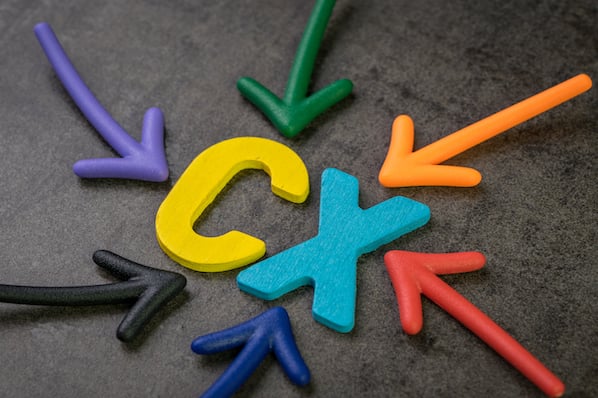
Customer Experience Could Be The Reason Your Online Shoppers Aren’t Converting
Outline your company's customer journey and experience with these 7 free customer journey map templates.
Marketing software that helps you drive revenue, save time and resources, and measure and optimize your investments — all on one easy-to-use platform

Understanding customer journeys on Amazon
Download amazon seller guide.
This guide will help you get started, understand the basics of Amazon selling, and explain in simple words how it all works.
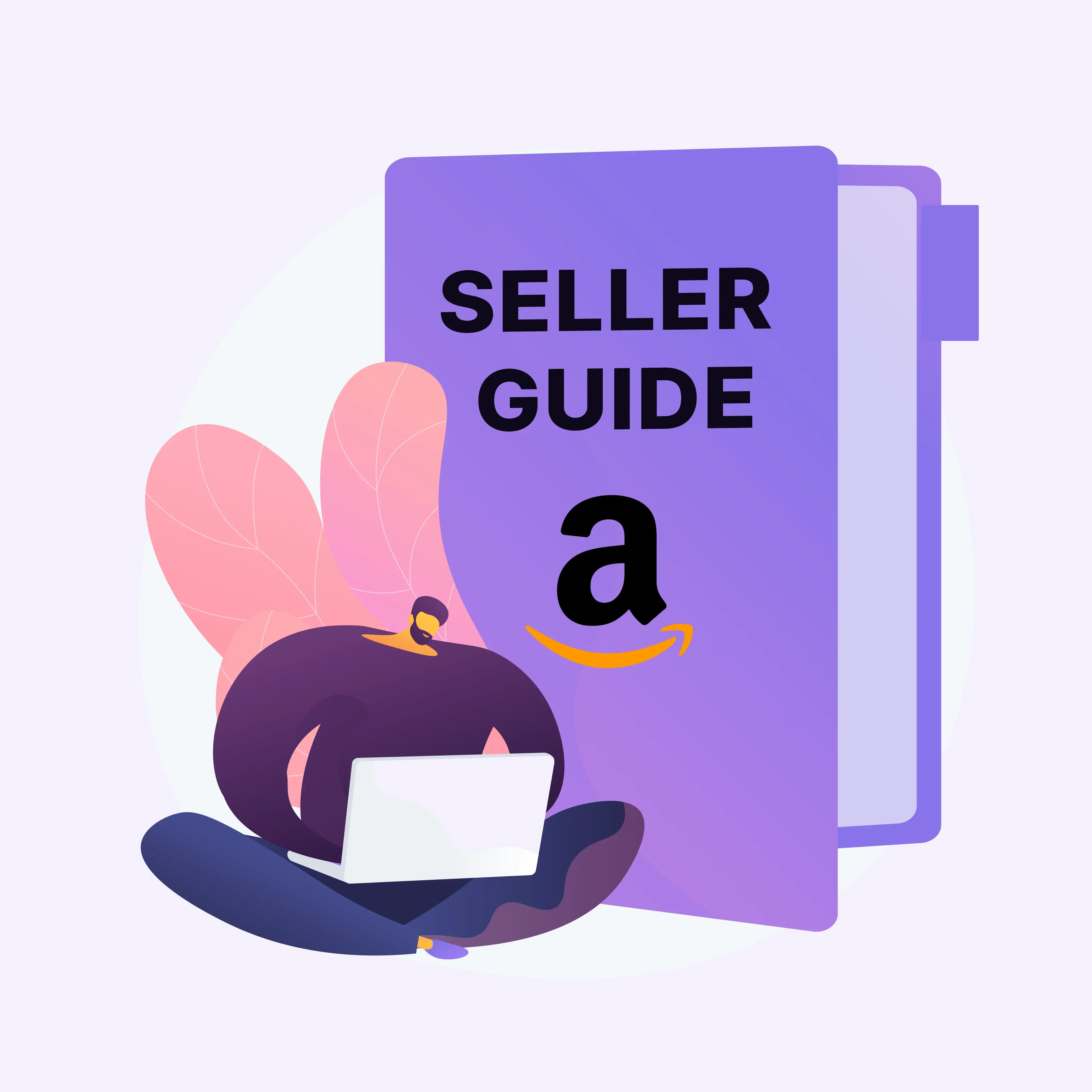
Understanding customer journeys on Amazon is crucial for brands looking to enhance their performance on this vast platform. Navigating the journey effectively can significantly improve customer engagement, increase sales, and foster loyalty at each stage in the Amazon customer journey, which will help sellers achieve better results and reach their goals.
In-Depth Exploration of the Amazon Customer Journey
Amazon ’s e-commerce strategy is thoroughly centered around creating customer-focused experiences that are smooth from beginning to end. Here’s a detailed look at each critical stage of the customer journey:
1. Awareness Stage:
This initial phase is crucial as it’s when potential customers first encounter your products. They might discover your brand through various channels such as targeted ads, social media, word-of-mouth, or simply by browsing Amazon. The objective here is to capture their interest with eye-catching visuals and engaging, concise messaging that highlights the uniqueness of your products.
2. Consideration Stage:
During this stage, customers often compare your offerings with those of your competitors. They meticulously examine your product descriptions, read through customer reviews, and analyze pricing details. Providing transparent, detailed, and compelling content is vital here to assist them in understanding the benefits of choosing your product over others.
3. Purchase Stage:
At this point, the customer is ready to make a purchase decision. A clear, simple, and efficient checkout process is key to converting their interest into a sale. Ensuring that product listings are straightforward, with no hidden complexities or barriers, can greatly enhance the likelihood of conversion.
4. Retention Stage:
Once a purchase is made, your focus should shift to encouraging repeat business . This involves efficient customer service , simple return policies, and proactive follow-up communications. Offering regular updates about new products and exclusive promotions can keep your brand at the forefront of their minds, increasing the chances of them returning.
5. Advocacy Stage:
The ultimate goal is to transform satisfied customers into active promoters of your brand. Engaging with customers authentically, valuing their feedback, and incentivizing them to share their positive experiences can lead to valuable word-of-mouth marketing.
Crafting a Customer Journey Map on Amazon
To effectively manage these stages, creating a comprehensive customer journey map is crucial. Here’s how you can develop this map:
- Identify Touchpoints: Pinpoint where customers interact with your brand on Amazon. This includes everything from viewing product pages to contacting customer service.
- Gather Data: Utilize Amazon Brand Analytics and other tools to gather data on how customers discover and interact with your listings. This information can reveal valuable insights into their behaviors and preferences.
- Develop Customer Profiles: Create detailed profiles for your typical customers. These should encompass demographic information, purchasing behavior, and preferences to help tailor your marketing strategies more effectively.
- Set Objectives for Each Stage: Define clear goals for each stage of the journey. For instance, aim to enhance product visibility during the awareness stage or improve customer satisfaction during the retention stage.
- Review and Adjust: Continually assess the effectiveness of your approach at each stage and make necessary adjustments. This iterative process helps ensure your strategies remain effective as market conditions and customer behaviors evolve.
Successfully managing the Amazon customer journey is critical for establishing a thriving brand on the platform. By meticulously understanding and enhancing each stage of this journey, you can boost customer satisfaction, increase sales, and cultivate lasting loyalty.
Explore our suite of Amazon tools in partnership with AMZ Pathfinder! With Seller Assistant, you can effortlessly integrate our FBM&FBA profit calculator, Advanced IP-Alert, Variation viewer, and more, right on your Amazon product page. Immerse yourself in our analytics, sync data directly to Google Sheets, and tap into global markets with solutions trusted by over 50,000 users. Begin your journey with a 14-day FREE trial — no payment info required — and propel your business to new heights!

AMZ Pathfinder

Featured Posts
How to read a keepa graph, 5 ways to find amazon online arbitrage leads, 7 amazon product research tactics you need in 2024, how to make money on amazon, seller assistant extension review, best product ideas for amazon fba in 2024, 12 ways to find wholesale suppliers for amazon fba, how to find profitable products for amazon online arbitrage, how to list products on amazon - complete guide, amazon seller central: complete guide, how to sell on amazon for beginners - complete guide, what is amazon ip complaint how to avoid ip complaints, amazon retail arbitrage 2024 guide, amazon fba fees 2024, amazon online arbitrage: how to make money, the best amazon online arbitrage tool — seller assistant, amazon business models: how to choose the right one, online arbitrage for beginners, 13 rules of oa product research tested by pain and gain of amazon seller, amazon glossary for sellers, how to source products for online arbitrage with seller assistant deals marketplace, how to match seller assistant app and google sheets to achieve better results, watch promo video.

Get New Posts to Your Inbox
Subscribe to our blog updates
You Might Also Like
Customer service by amazon — all you need to know, is online arbitrage still profitable in 2024, sales estimator by seller assistant, how to ship to amazon fba - step-by-step guide.

Alternatives
Integrations, other links.
Map the customer contact journey
When your organization's goals have been defined, work back to build a customer journey map. This map helps identify typical engagement patterns and the data required to resolve customer queries. It also helps define the experience presented to the customer, responses to unplanned events and emergencies, and the volume and scale of customer contacts necessary for deployment.
This step is critical to planning for three AWS Well-Architected Framework pillars: operational excellence , security , and reliability .
Here are some questions to consider when you create the customer contact journey map:
What is the customer's reason for contact?
The answer to this question helps identify frequently asked questions, such as balance inquiries, order status updates, and password resets.
How do you validate the customer's identity?
Security is top priority, and validating the customer's identity is a critical step in the contact journey. Authentication options include voice biometrics, one-time passwords, and personal information such as credit card number and date of birth. This information also helps identify compliance requirements such as the Health Insurance Portability and Accountability Act (HIPAA), Payment Card Industry Data Security Standard (PCI DSS), and System and Organization Controls (SOC).
What information do you already have about this customer?
After a customer has been identified, relevant customer data can help personalize their experience and solve issues proactively. This data could include the customer name, open cases, contact history and sentiment, and purchase behavior.
What information is needed to resolve the customer's query?
Determining the information that is required to address the customer's queries helps define the customer data that should be gathered within the IVR system. For example, if a customer wants to check their balance, their account number and security PIN will be required, and the IVR application will have to integrate with the backend data stores that contain banking data. Checking the status of their order requires the order number.
Are any integrations required to fulfill the customer's request?
Typically, self-service requests on the IVR require backend integrations for successful fulfillment. Depending on the use case, these integrations could be with databases, CRMs, or ticketing systems in the organization. For example, communicating the status of an order might require querying the information from an order management system. Purchases might require integrations with a payment gateway. It is crucial to identify these dependencies early, so you can plan for the availability of relevant APIs.
What are the compliance requirements related to the customer's journey or data?
It's critical to define compliance objectives and incorporate them in the IVR design. Compliance programs are commonly enforced at an organizational level. We recommend that you engage the information security team in these discussions and planning sessions.
For example, payment information on the IVR might require encryption and PCI DSS compliance. Personal identifiable information (PII) collected from any customer would require encryption. Your IVR system might involve additional information that you would have to protect.
How do you respond to high call volumes or agent unavailability?
It's essential to identify scenarios where high call volume could lead to longer wait times. In these situations, the IVR system often acts as a gateway for effective redirection of customer contacts. Some common deflection strategies include offering callbacks during exceptionally long wait times, designing overflow scenarios that expand the pool of target agents, playing promotional messages, and redirecting a customer to another channel (SMS or chat). For more information about these strategies, see the blog post How to handle unexpected contact spikes with Amazon Connect .
What should the customer experience be during holidays or emergencies?
Unforeseen emergencies and unplanned events can impact your organization's ability to serve customers. Planning the customer experience during these events is a best practice for reliability. Additionally, holidays might limit staffing, and the IVR system can be an ideal place to keep customers informed and to set expectations.
For example, you can design emergency placeholders and holiday messages in the IVR system, update them, and play relevant updates when needed.
What should the customer experience be when you experience technical issues?
A customer's experience should always be complete and meaningful when they're following the IVR flow, even when application or backend integration errors occur. We recommend that you design the caller experience in the case of integration failures. Typically, you can implement retries and loops, or play a message that communicates the technical difficulty or transfers the customer to an agent. In either scenario, the caller experience should not lead to an abrupt and unexplained end to the communication, which would typically result in more calls.
After you outline the customer contact journey, look for repeatable processes or common patterns. These will be key points of focus when you design the foundation of your IVR architecture.

To use the Amazon Web Services Documentation, Javascript must be enabled. Please refer to your browser's Help pages for instructions.
Thanks for letting us know we're doing a good job!
If you've got a moment, please tell us what we did right so we can do more of it.
Thanks for letting us know this page needs work. We're sorry we let you down.
If you've got a moment, please tell us how we can make the documentation better.
RevelX: 10 Years of Innovation 🚀 Discover the journey

- Strategy Development & Execution
- Innovation Operating Model & Tooling
- Innovation Portfolio Management & Execution
- Innovation Readiness Benchmark
- Corporate Venturing Readiness Assessment
- About RevelX
- Innovation Assessment
How Amazon, Google, and Belsimpel Perfected the Customer Journey (And How To Apply These Lessons)
Some companies confuse the different phases of the customer journey, resulting in low conversions. Instead, you have to use a matching mode of communication in each step of the customer journey. Learn from Amazon, Google, and Belsimpel.
Amazon, Google, and Belsimpel are the masters of the customer journey. They have optimized every touchpoint with the consumer. You can learn a lot from these businesses.
In the classical marketing model, marketing is seen as a funnel. At the beginning of the process, there are many companies competing for the attention of the customer, and this number is reduced through the different purchasing stages. According to this outlook, marketing is an action of “pushing” the brand through a few touchpoints such as television ads.
What is the Customer Journey?
In the current digital era, there are many more touchpoints from new types of digital media channels. As a result, the funnel is now seen as a “customer journey”, or rather, a multitude of interconnected journeys. Gartner defines it as “a variety of touchpoints by which the customer moves from awareness to engagement and purchase.”
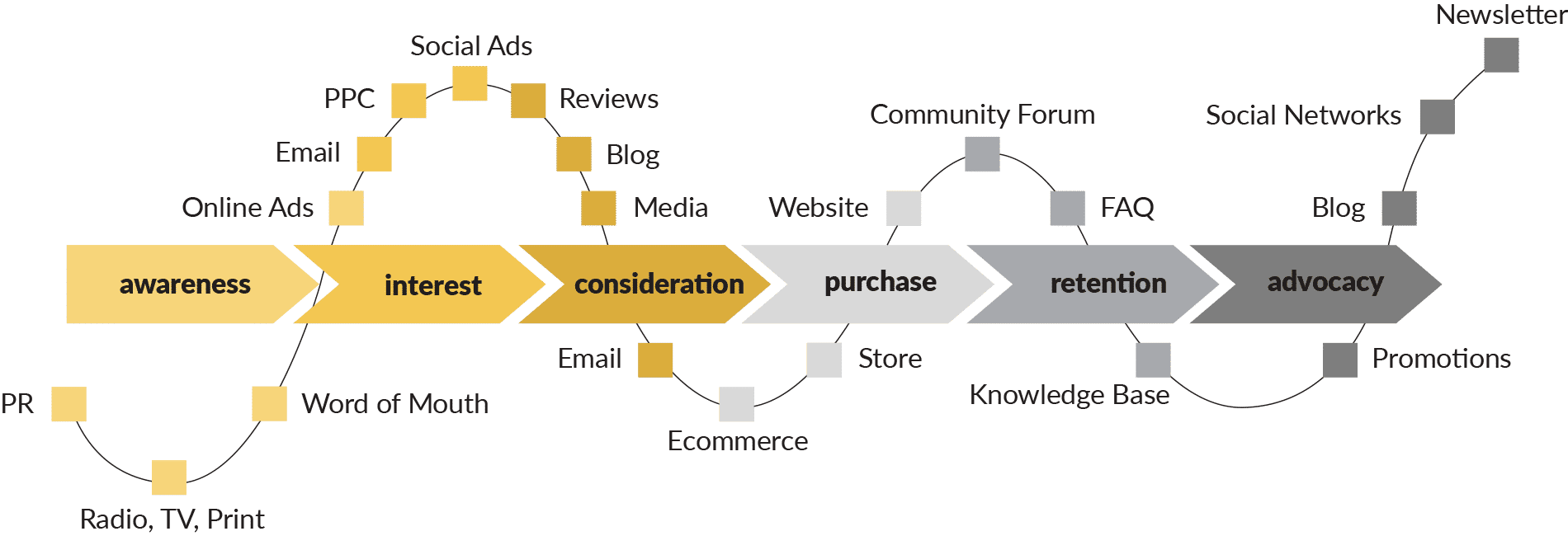
According to the research company, successful brands focus on developing a seamless experience that ensures each touchpoint interconnects and contributes to the overall journey.
Traditionally, the customer journey is subdivided into 5 steps: awareness, consideration, purchase, retention/service, and loyalty. Later on, in this blogpost, I will dive deeper into these phases.
The Biggest Customer Journey Mistake
Theoretically, the customer journey is not a complex phenomenon. In practice, though, I see many companies making big mistakes applying it. For instance, they give free products to people who are already paying customers. Or, they offer detailed quotations to customers who are only in the awareness phase. In other words, they confuse the different phases of the customer journey, resulting in low conversions.
The trick is to use a matching mode of communication in each step of the customer journey. This will derive the best results. As you will see, psychology plays a big role in mapping the perfect customer journey. The following steps describe the phases in the customer journey, the communication activities that are applicable to these steps, and some great examples from real-life case studies.
- Awareness: Hey, Look at Me!
This is the initial phase of the customer journey. Here customers may have heard about your brand, but they do not act on this knowledge yet: they do not visit your site or make a purchase. In this phase, you will have to trigger your potential customers. Advertising or ‘mass’ communication is the main tool here.
Controversial or funny advertisements are a usefull way to go in the awareness phase. Standing out in the crowd is your goal.
Take for example the Dutch IT company Incentro. In a radio ad, they asked listeners to call their baby “Incentro.” Then you would be eligible for a 5,000 Euro prize. Some thought the advertisement unethical. Others said it was irritating, and there were people who thought the ad was funny. But, people talked about it, and that was just what they wanted.
- Consideration: We are the Kind of Company You Trust
In this phase, customers make a choice. Although they may already have some knowledge about you, they will try to discover more. They also discover the competitor.
At the moment that the consumer makes a choice between different providers, you want to be in the spotlight. Because the customer is now actively searching for information, you need an optimized website (SEO-proof and mobile-friendly) and a nice social media presence.
Now that you have her attention, you want to establish trust, authority and a beginning relationship. This is done in the form of content such as white papers and blog posts. Of course, the copy is optimized for Google and is contentwise tailored to this phase in the customer journey.
This phase is also about building your image. You have to be the kind of business your customer likes and trusts.
Google knows how it works. In professionally produced webinars they explain how their cloud portfolio works and what the advantages are. The company establishes itself as a dependable partner, at the same time giving arguments why to choose Google.
- Purchase: We will make this Process Quick and Easy
At this point, the customer decides to purchase. In this phase, your communication has to be a little more rational than in the Consideration Phase. You give sound reasons why the customer should buy your product, thereby excluding all risk. You give, for example, a warranty.
It is important that the purchase process goes well, quickly, and easily. Furthermore, the customer may need some final arguments to fully convince her.

In this phase, it is important that there is no friction in the process. One of the best examples is Amazon ‘s one-click purchasing button. This innovation increased conversion because it shortened the decision-making process considerably. The button made customers happy too; no more hassling with endless check-out procedures.
- Retention/Service: Congratulations, You Bought Our Product!
The customer journey does not stop after the purchase. It is a continuous cycle. Where the previous phases mainly concern usability, it is important in this phase to give the customer a positive experience.
In this phase, you let the customer know he decided wisely by being your customer. One way to accomplish this is through social proof: you tell them that other customers are happy with the product.
Dutch Belsimpel has a simple way to send this message. This reseller of mobile phone subscriptions delivers products such as smartphones in a box that says: “Good choice!”
- Loyalty: You may also Consider…
This phase is all about aftercare. You keep in contact with your customer through, for example, a newsletter, social media, or an app. When you establish a good relationship with your customer through these channels, she will more quickly skip the Consideration Phase.
I also have to mention personalized offers which you can compile on the basis of customer data and an analytics solution. These offers strengthen your bond with the customer, while, at the same time, increasing conversion.
Amazon’s emails are the poster child for this kind of marketing. The e-commerce giant uses data collected from a customer’s shopping history to send offers tailored to their interests. They also send you an email reminding you that you abandoned a shopping cart.

The Customer Journey in Your Organization
There may be not a single business in the world that hasn’t a customer journey to handle. Sadly, some companies fail to see this. These are organizations that don’t understand that every touchpoint with a customer is part of the whole buying experience . Some of these businesses are monopolists; others go out of business.
I know you want to be another kind of business, one that places the customer front and center. At RevelX, we know how to make this wish a reality. If you need our expertise, please make an appointment with one of our experts .
Learn From The Best! Download
The 25 best growth hacks.

René Jongen
Specialist in top line growth. Supports both corporates that are under a lot of commercial pressure and businesses that are looking for ways to accelerate their growth. Technical physicist. Builds on psychology and neuro-marketing insights.
Related posts

5 Growth Mindset Examples That You Can Use in Your Job Tomorrow
People who believe their success is based on hard work,…
September 15, 2022

Retention strategy: Keeping the right customers
Retaining customers is a top-line priority for any…
May 15, 2020

Who are my most valuable customers?
Legend has it Alfredo Pareto noticed something unusual in…
April 22, 2020

Customer journey mapping: A step-by-step guide

If you're struggling to keep customers engaged beyond just hearing about your product and getting initial interest, this customer journey mapping guide is exactly what you need.
With over a million data insights extracted to date, we created this actionable guide to simplify the process of creating a customer journey map. This will help you engage your potential customers more efficiently and see better conversion rates.
Let’s get right to it.
Step 1: Clarify your goals & scope
This is where you will define why you want to map your customer journey and outline where you will outline your project boundaries. Here is what you need to do:
- Identify what you want to accomplish with the customer journey map. Is it to drive more visitors, improve customer satisfaction, or increase conversion rates?
- Next, set your mapping effort’s scope , including which customer segments (new customers, returning customers, or high-value clients) or stages of the journey (awareness, consideration, purchase, and post-purchase support) you will focus on for mapping.
Identify who will be involved in the process–marketing teams , customer support, or product development.
Step 2: Gather insights from customer data
This step is where you will understand your customers' behaviors, preferences, and pain points throughout their journey. Here’s how to do it:
Identify and gather data from diverse sources . Use Clootrack to collect customer feedback and candid discussions from eCommerce sites, forums, blogs, and social media, alongside private enterprise data like customer service calls, NPS surveys, website/app feedback, and chatbots.
Organize your data into meaningful segments based on demographics, behavior patterns, and interactions with your brand so you can understand different customer personas and their unique journey experiences.
Identify key touchpoints where customers interact with your brand—from initial awareness to post-purchase support. This will highlight critical moments that influence customer satisfaction and loyalty.
Use Clootrack to gather qualitative feedback directly from customers . Analyzing feedback and sentiment analysis will provide nuanced insights into customer emotions and perceptions at each stage of their journey.
Involve cross-functional teams –marketing, sales, customer support, and product development—in the data analysis process. Their diverse perspectives will help you better understand the customer journey.
Use the gathered insights to refine your customer journey map . Identify areas for improvement or opportunities to enhance customer experience, thereby driving engagement and loyalty.
Step 3: Craft detailed customer personas
This step helps you visualize and understand your target audience more deeply. Here’s how to proceed:
Use the data you gathered from Step 2 to create distinct customer personas . These personas should represent different segments of your audience based on demographics, behaviors, and preferences.
Define each persona by outlining their specific traits, such as age, interests, challenges, and buying motivations. This detailed characterization helps humanize your audience and makes customizing your strategies to their needs easier.
Give each persona a name that reflects their characteristics and motivations. This simple step can make personas more relatable and memorable for teams across your organization.
Create visual representations or profiles that encapsulate each persona’s traits and behaviors. This helps you empathize with your audience and intuitively understand their journey.
Share these personas with relevant teams, such as marketing, sales, and customer support. Ask for their feedback to ensure it is accurate and aligns with their experiences and observations.
Step 4: Pinpoint critical touchpoints
These touchpoints are key moments where customers interact with your brand and can significantly impact their overall experience. Here’s what you need to do:
- Use the personas to map out the typical paths your customers take from initial awareness to post-purchase support. Identify all potential touchpoints where customers engage with your brand and where they potentially drop off.
- Pinpoint specific interactions at each stage of the journey that are crucial for customer satisfaction and loyalty. These interactions may include website visits, product searches, social media interactions, and customer service inquiries.
- Identify which touchpoints have the most significant impact on the customer experience and business outcomes. Focus on optimizing these high-priority touchpoints to maximize customer engagement and retention.
- Recognize that customers may interact with your brand using multiple channels (website, social media, physical stores). To provide a unified experience, ensure consistent and seamless transitions between these channels.
- Use feedback forms, customer interviews, and traditional surveys with CX data analytics to learn how customers see and interact with each touchpoint .
- Adjust your touchpoint strategy based on new data and evolving customer expectations.
For example:
Are ads bringing a steady customer flow to your website? How much of them convert? If your ads aren’t getting the projected traction, how can you maximize your ad efforts ? If they click on your ad but don’t drop off seconds later, what friction are they experiencing?
Step 5: Visualize the customer's journey
This visual representation helps you and your team understand the flow of interactions and experiences that customers go through. Here’s how to proceed:
- Use diagrams, flowcharts, or journey mapping tools to visually represent each stage of the customer journey—from initial awareness to post-purchase support. This map should include key touch points identified in Step 4.
- Map out the actions customers take at each stage, like research, consideration, purchase, and advocacy to see your customers’ progression and decision-making process.
Highlight customer emotions, motivations, and pain points at each touchpoint to understand how customers perceive their interactions with your brand.
Integrate the personas created in Step 3 into your visual map. Assign each persona to different journey stages to illustrate how different customer segments experience your brand.
Present the visual customer journey map to cross-functional teams , including marketing, sales, customer support, and product development.
Step 6: Extract & analyze key insights
This process helps uncover actionable findings that can drive strategic decisions and improvements. Here’s what you need to do:
Identify metrics and indicators most relevant to your goals and customer journey stages. It can include conversion rates, customer satisfaction scores, retention rates, and engagement metrics.
Use data analytics tools and platforms to analyze quantitative data effectively. Clootrack can provide deep insights into customer sentiment, preferences, and behavior patterns across different touchpoints.
Apply qualitative analysis methods to interpret customer feedback, comments, and suggestions. Conduct thematic analysis or sentiment analysis to uncover recurring themes and emotions customers express.
Compare insights across different segments to identify trends, preferences, and pain points that may vary among customer groups.
Step 7: Spotlight pain points and growth opportunities
This step focuses on addressing challenges and seizing potential areas you can improve. Here’s what you can do:
Pinpoint recurring issues or frustrations customers express . Focus on areas where customers face obstacles or dissatisfaction while interacting with your brand.
Highlight specific touchpoints or stages in the journey where customers experience the most significant challenges or friction. These pain points could include long wait times, confusing navigation, product issues, or poor customer service experiences.
Prioritize pain points based on how critical they are for customer experience and business outcomes.
Brainstorm actionable solutions and initiatives to mitigate pain points and capitalize on growth opportunities. Implement changes that align with customer needs and strategic business objectives.
For example :
You notice that potential customers feel your products are pricey, so they bounce off the product page without adding an item to the cart. To fix this, offer them discounts that make them feel purchasing is a steal, like what this workout supplement store did. They give potential customers a 5% discount when they subscribe and a 10% discount, making the latter discount irresistible.

Step 8: Formulate actionable strategies
Here is how you can formulate strategies that address identified challenges and capitalize on potential improvements:
Break down strategies into targeted actions aimed at different customer segments, personas, or journey stages.
Prioritize actionable strategies based on their potential impact on customer satisfaction, retention, and business growth. Focus on initiatives that address critical pain points or leverage significant growth opportunities.
Roll out strategies in phases or iterations to test their effectiveness and adjust based on feedback and performance metrics.
Communicate strategy objectives, action plans, and expected outcomes clearly across the organization. Educate team members on their roles and responsibilities in executing strategies effectively.
3 Types of customer journey maps and examples
As you go through each one, consider which matches your goals the closest.
1. Current state journey map

Get the full template
This type of customer journey map illustrates customers' existing experience as they interact with a product, service, or brand. It focuses on capturing the actual steps, touchpoints, emotions, and pain points customers encounter in their journey.
eCommerce purchase journey : Map out how customers navigate from browsing products online to making a purchase, including interactions with customer support and post-purchase follow-up.
Banking service experience : Detail the current process customers go through when opening an account, managing transactions, and accessing customer service.
Healthcare patient journey : Charting the steps patients take from scheduling an appointment to receiving care to follow-up visits, highlighting interactions with staff and satisfaction levels at each stage.
2. Future state (ideal) journey map
A future state journey map focuses on mapping out the desired steps, interactions, and touchpoints that will optimize customer satisfaction and loyalty. Here’s how it looks:
Fashion retailer future state journey : Customers browse online and in-store, with personalized style recommendations based on past purchases and preferences. Virtual fitting rooms let trying on clothes digitally before purchasing.
Hotel ideal journey : Guests book their stays via a user-friendly app or website, customizing room preferences and special requests in advance. Upon arrival, they receive a personalized welcome and digital room keys for contactless access. Throughout their stay, they receive tailored recommendations for local experiences and amenities, with seamless check-out and post-stay follow-up for feedback and loyalty rewards.
Automotive ideal journey : Customers explore and configure their desired vehicle online, scheduling test drives at their convenience. After purchase, they receive personalized maintenance reminders and updates on service appointments via a mobile app. Proactive alerts for recalls or upgrades keep them informed, with seamless integration of vehicle data for personalized service recommendations.
3. Day in the life journey map
A day in the life journey map portrays a detailed view of how customers interact with your product, service, or brand throughout their daily activities. It focuses on capturing how customers behave, their pain points, and engagement moments across various touchpoints. Here’s how it works:
Meal kit service day in the life journey : A customer plans meals for the week using an online platform, customizing recipes based on dietary preferences and family size. They receive a scheduled delivery of pre-portioned ingredients with recipe cards, and cooking meals with step-by-step instructions. Throughout the day, they provide feedback on recipes through a mobile app, and get personalized recommendations for future meals based on their preferences.
Fitness app day in the life journey : A customer starts their day with a personalized workout routine a fitness app suggests, tracking their progress and calories burned. Throughout the day, they receive motivational messages and reminders to stay hydrated. After workouts, they log meals and monitor nutritional intake through the app, with personalized recommendations for achieving fitness goals. In the evening, they review sleep patterns and receive tips for improving sleep quality.
Now, what should you use for which?
Use a current-state journey map to understand existing pain points and improve current customer experiences, a future-state journey map to envision and plan ideal customer interactions for future improvements, and a day-in-the-life journey map to capture detailed daily interactions.
5 Customer journey mapping best practices
Keep these 5 points in mind to make the most out of your customer journey mapping efforts.
I. Use customer experience analytics
Pick an advanced CX analytics platform that can handle diverse data sources, such as website interactions, social media engagements, customer service interactions, and sales data. Create a unified view and configure live dashboards and automated alerts that notify your teams instantly when critical issues or opportunities arise.
II. Include diverse perspectives
Bring together people from different departments like marketing, customer support, product development, and sales. In brainstorming sessions, focus on understanding what each team sees and experiences with customers.
Discuss how customers interact with your brand at different stages—like when they first discover your product, when they decide to buy, and after they've made a purchase to get a clearer picture of what customers like, where they might get stuck, and how to make their experience better overall.
III. Focus on emotions and pain points
Pay attention to how customers feel at different stages of their interaction with your brand using customer surveys, feedback forms, and social media listening to gather insights into their experiences and emotions.
In brainstorming sessions, discuss common frustrations, challenges, and moments of delight that customers encounter. Identify specific touchpoints where emotions play a significant role, like during product research, purchasing decisions, or customer support interactions.
IV. Keep it visual and understandable
Work with an expert designer on a clear and intuitive layout that anyone in your team can grasp quickly. Be straightforward in representing customer interactions and touchpoints. Use color coding, icons, and timelines to visually differentiate between different stages and actions within the journey.
V. Validate with customers
Involve your actual customers in the process by using surveys, interviews, or focus groups to gather direct feedback. Focus on determining whether the mapped journey aligns with their real-life experiences and emotions.
Pay attention to any discrepancies or missed opportunities they highlight. This customer-centric approach shows that you value their input in shaping a better overall experience.
It can look overwhelming to implement in the beginning. But focus on one step at a time, see how and where you can apply each action point, and you will gradually see the progress.
Always keep customer-centricity in mind. This means considering how customers feel about your offer rather than what you think they feel, so invest in collecting customer feedback and improving your interaction loop.
How do you do that with all the platforms you need to track? Clootrack is the answer. We integrate customer data from first-party and third-party sources into a secure, AI-powered CX analytics engine so it’s easier to discover underlying customer issues in real-time.
Read Next: Omnichannel retail and the rise of experiential shopping


IMAGES
VIDEO
COMMENTS
Learn how Amazon provides customer-centric moments at every stage of consumer purchase journeys, from consideration to purchase. Explore how Amazon dominates brand awareness, search results, and online shopping with its exceptional service and logistics.
The map covers the five "A's" of building a customer journey map: aware, appeal, ask, act, and advocate. The customer journey starts with awareness, or the moment when new customers discover your brand. That's when brands have the opportunity to appeal, or make their product pitch. The appeals are closely tied to the ask, when customers ...
Learn how to map the customer journey on Amazon and optimize it for better engagement, satisfaction, and loyalty. Discover the five stages of the journey, the benefits of mapping, and the tools to create a customer journey map.
Learn how Amazon sets the standards in e-commerce with its innovative and effortless service across multiple channels and touchpoints. Discover how Amazon delivers, orders, returns, and educates customers with its products, apps, social media, and artificial intelligence.
Amazon's unique contribution to the customer journey lies in incorporating user retention. Post-purchase engagement becomes paramount at this stage. Implement strategies like personalized follow-ups, exclusive offers, and seamless customer service to fortify the bond with your clientele. 5. Advocacy: Turning Customers into Promoters.
Learn how to map and improve your ecommerce customer journey from awareness to advocacy. Discover the stages, tips, and template of the ecommerce customer journey.
Amazon 's e-commerce strategy is thoroughly centered around creating customer-focused experiences that are smooth from beginning to end. Here's a detailed look at each critical stage of the customer journey: 1. Awareness Stage: This initial phase is crucial as it's when potential customers first encounter your products.
Map the customer contact journey. When your organization's goals have been defined, work back to build a customer journey map. This map helps identify typical engagement patterns and the data required to resolve customer queries. It also helps define the experience presented to the customer, responses to unplanned events and emergencies, and ...
True to its title, The 10-Second Customer Journey is a fast path to marketing excellence. - Brad Brinegar, Chairman Emeritus of McKinney and Executive In Residence at the Duke Innovation & Entrepreneurship Initiative. As CEO of the American Medical Association, I've seen firsthand the power of The 10-Second Customer Journey playbook in action.
Some companies confuse the different phases of the customer journey, resulting in low conversions. Instead, you have to use a matching mode of communication in each step of the customer journey. Learn from Amazon, Google, and Belsimpel. RevelX: 10 Years of Innovation 🚀 Discover the journey. Language. English; Italian; Capabilities.
Step 5: Visualize the customer's journey. This visual representation helps you and your team understand the flow of interactions and experiences that customers go through. Here's how to proceed: Use diagrams, flowcharts, or journey mapping tools to visually represent each stage of the customer journey—from initial awareness to post-purchase ...
Blokdyk ensures all Customer Journey Map essentials are covered, from every angle: the Customer Journey Map self-assessment shows succinctly and clearly that what needs to be clarified to organize the required activities and processes so that Customer Journey Map outcomes are achieved.
Customer journey mapping is a vital tool used by Customer Experience professionals around the world. The journey map is crucial in understanding and managing the customer's perception of your service or brand at critical touchpoints and prioritising how to improve that experience. Journey mapping also shows where great experiences currently ...
How Hard Is It To Be Your Customer is an outstanding, easy to read book that I believe represents the gold standard in customer-focused change initiatives and journey mapping methods. I look forward to incorporating many of Jim and Nicole's practical, well-reasoned and highly effective methods into my own practice!
Browse a selection of books on customer journey mapping, a method to understand and improve customer experiences across touchpoints. Find titles by James Kalbach, Jerry Angrave, Jim Tincher and more.
The Journey Mapping Playbook: A Practical Guide to Preparing, Facilitating and Unlocking the Value of Customer Journey Mapping (de Gruyter Business Playbooks) by Jerry Angrave. 99. Paperback. $3299. FREE delivery Tue, Nov 7 on $35 of items shipped by Amazon. Or fastest delivery Fri, Nov 3.